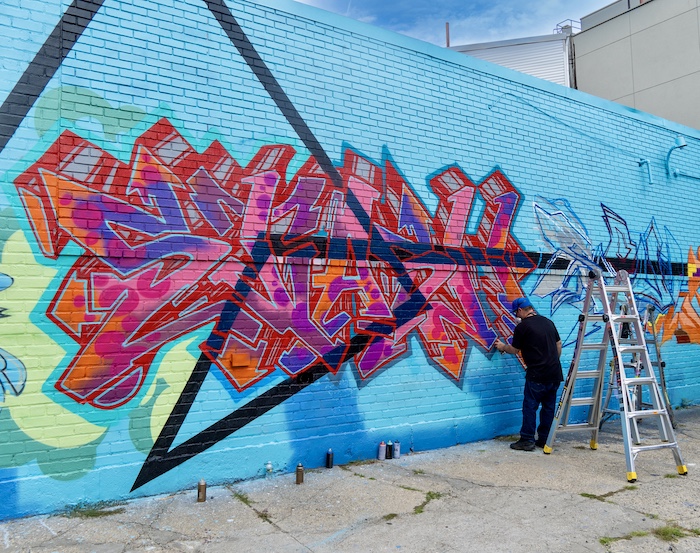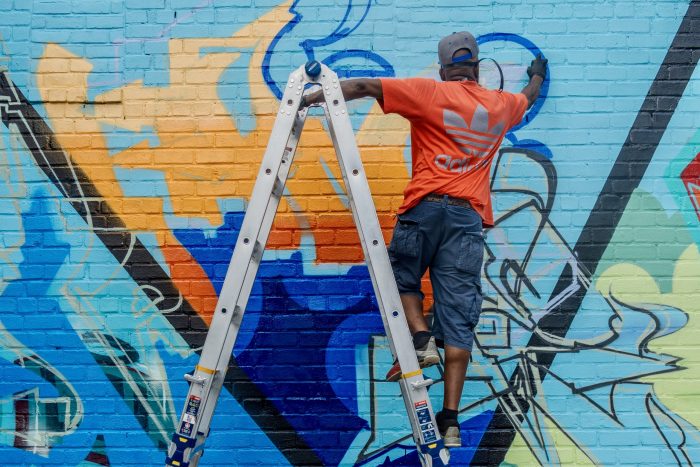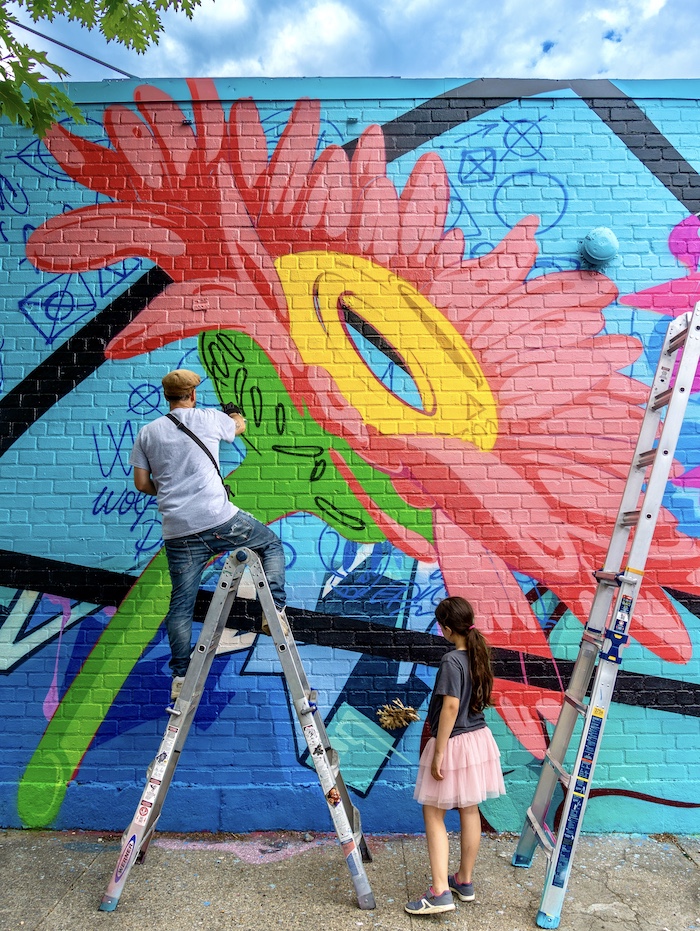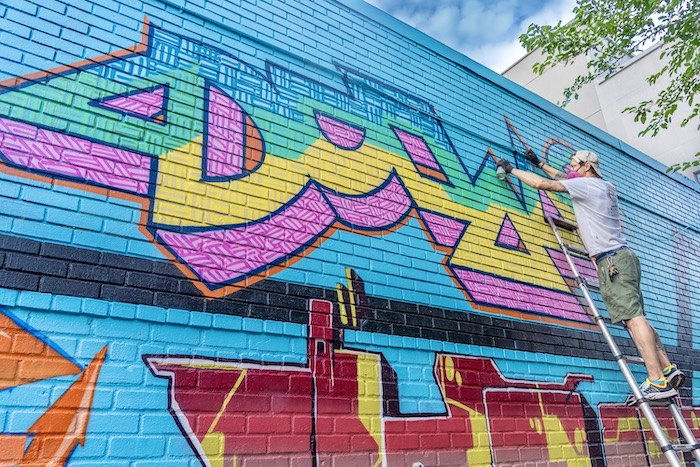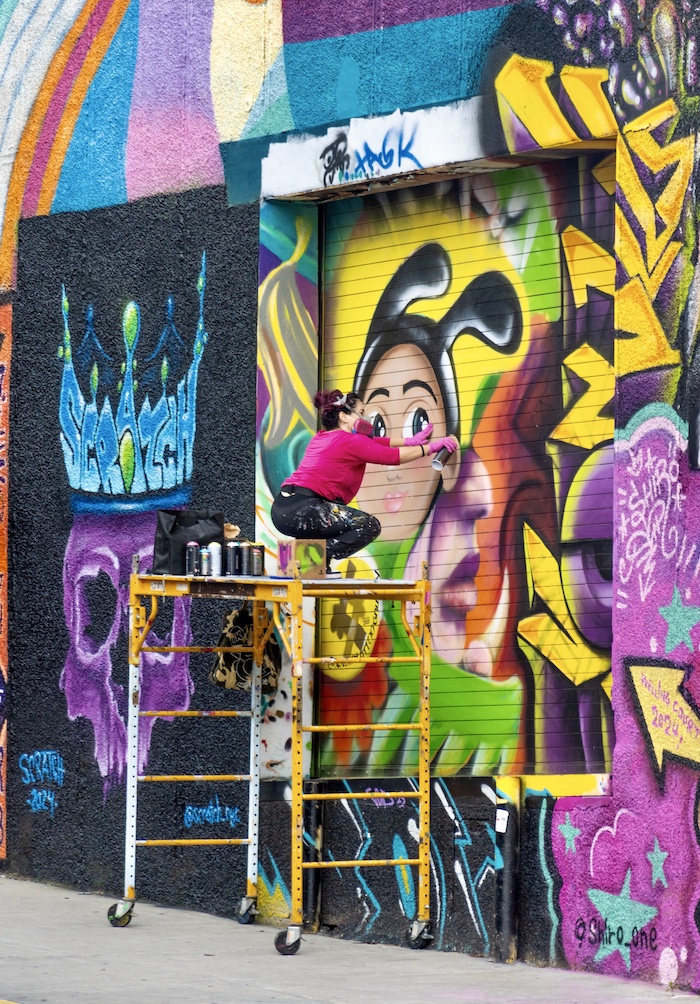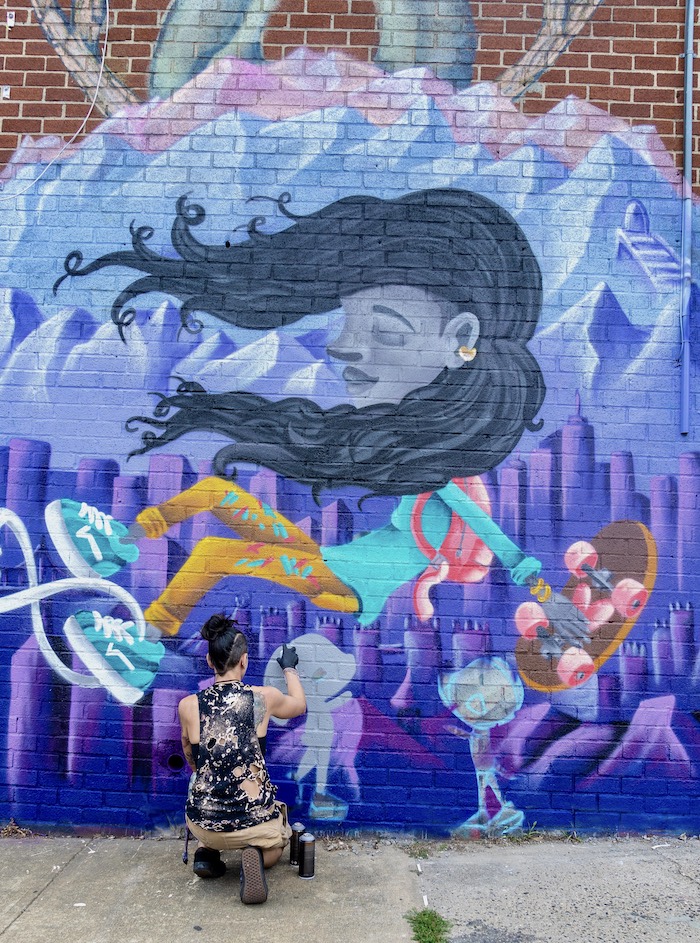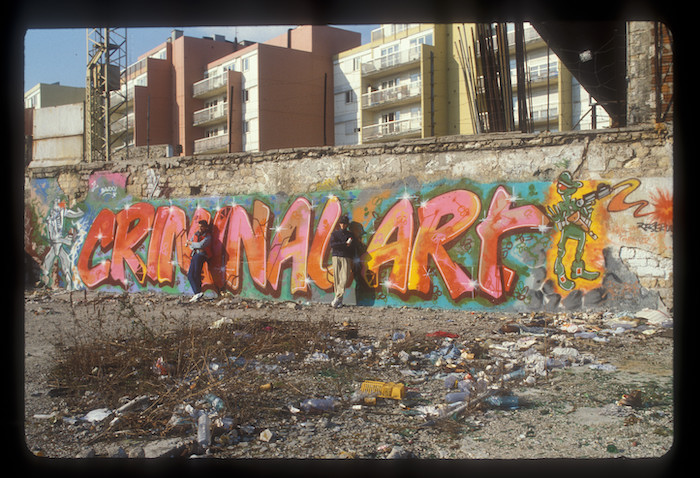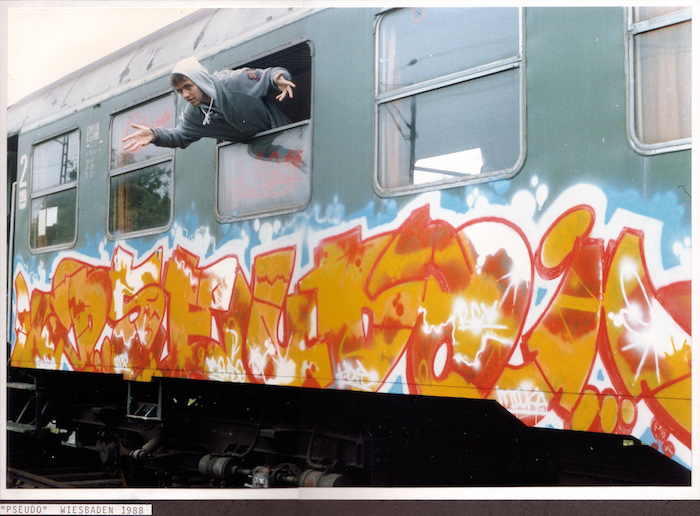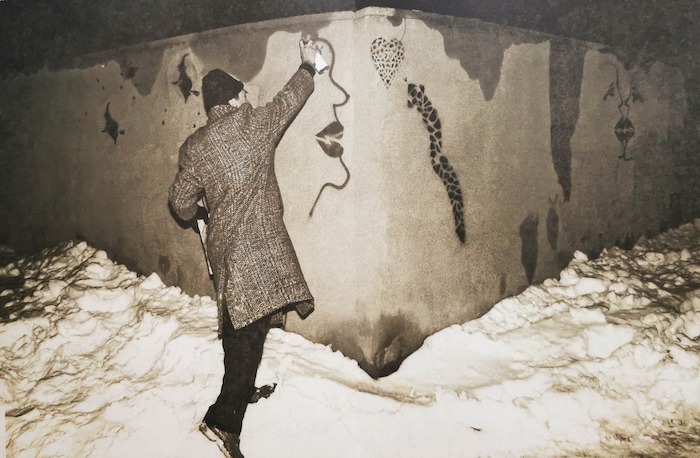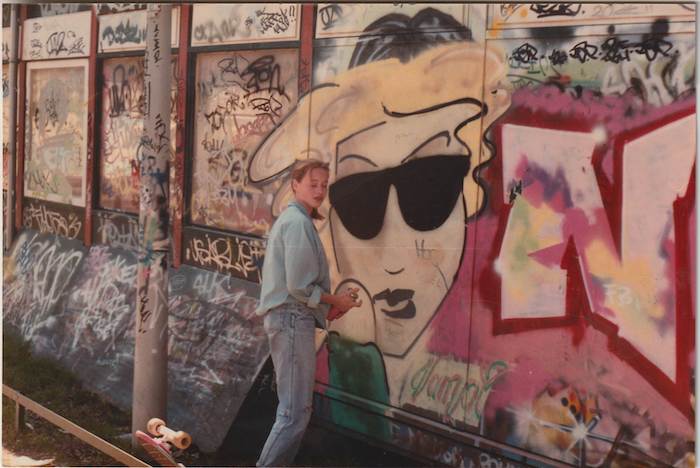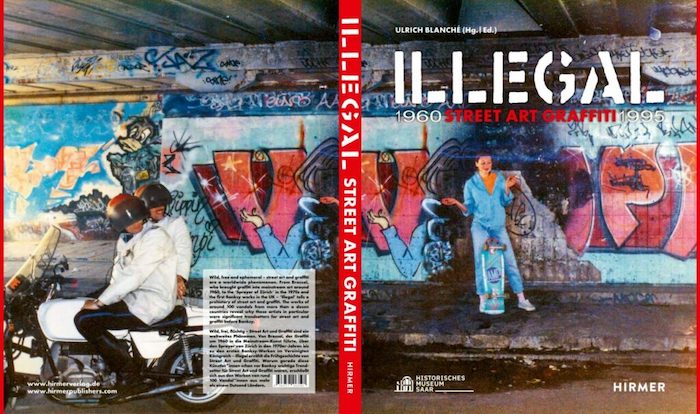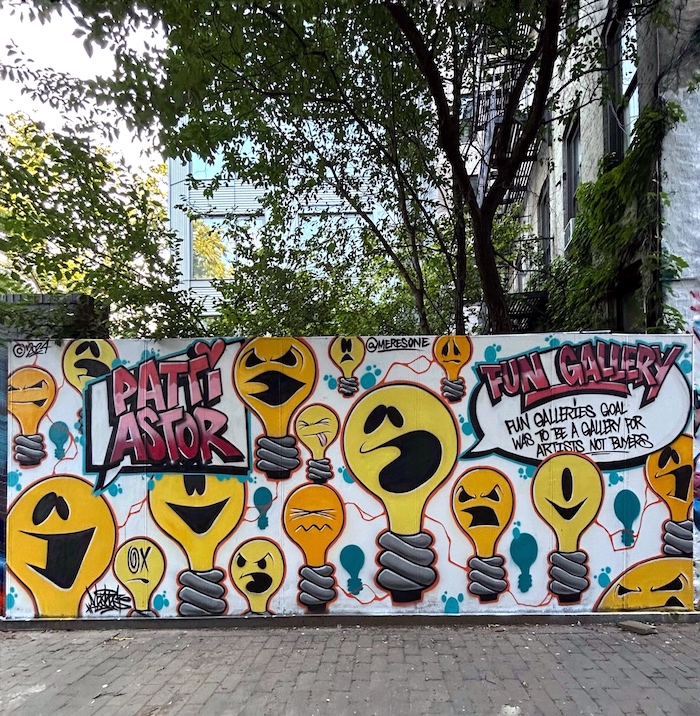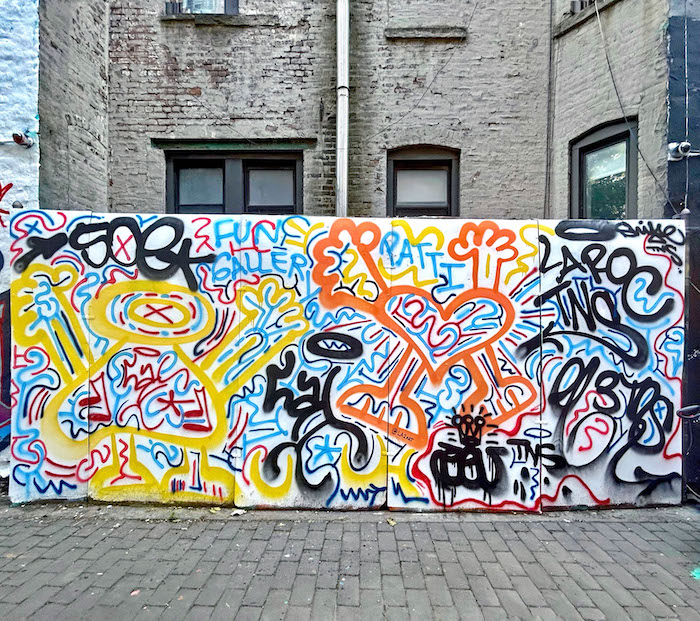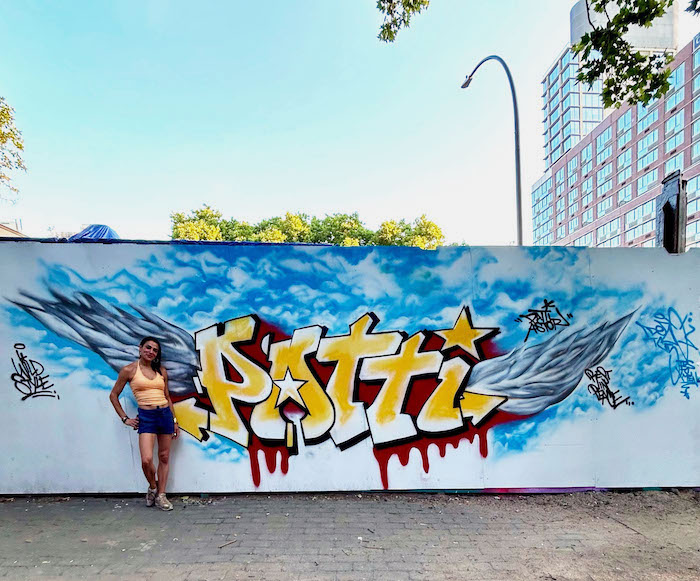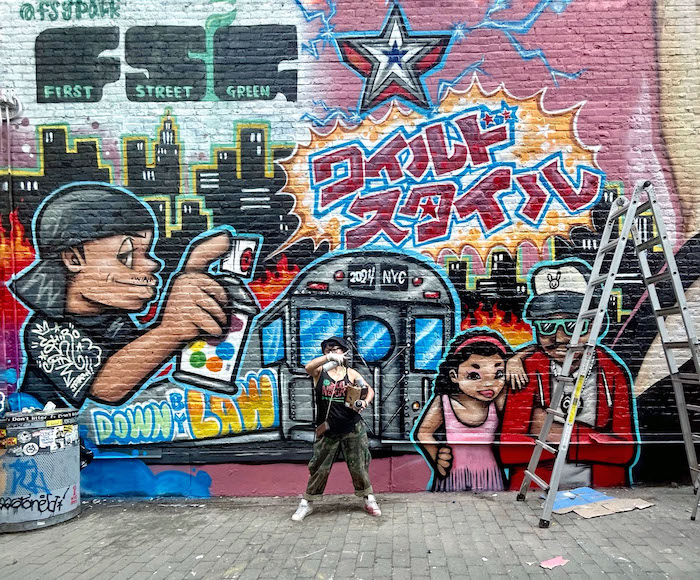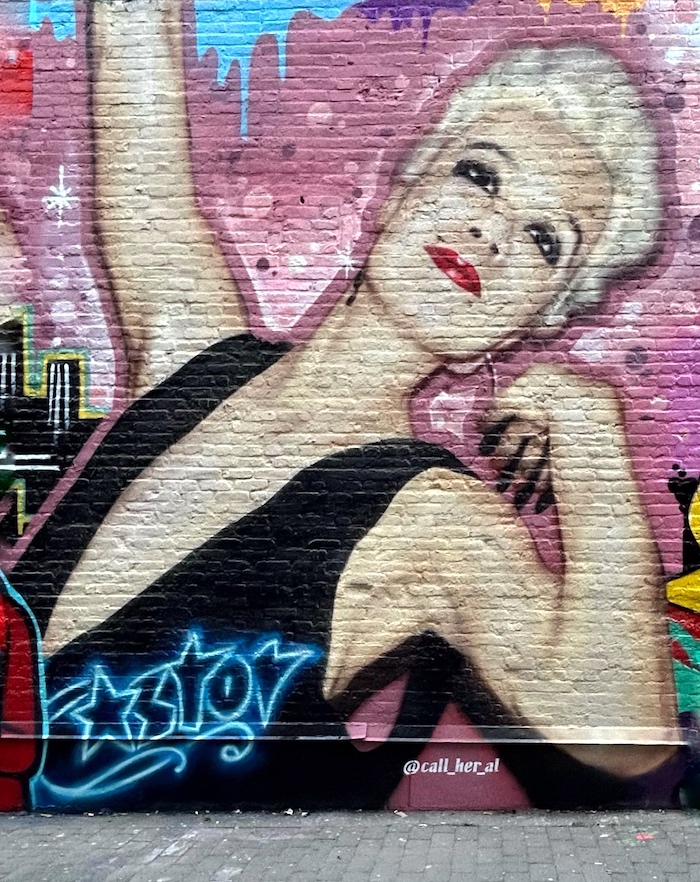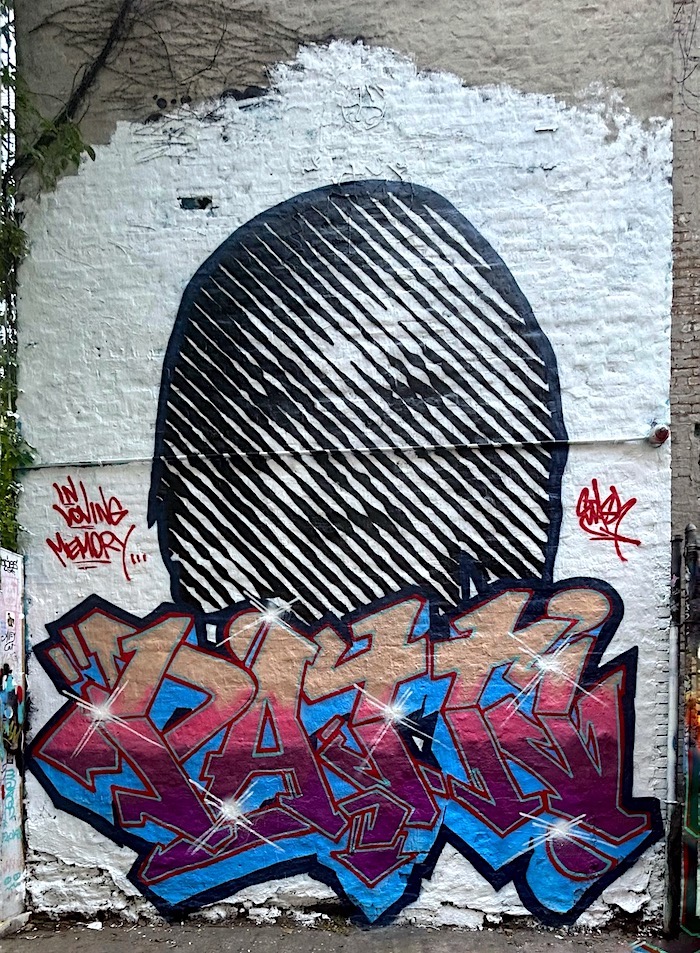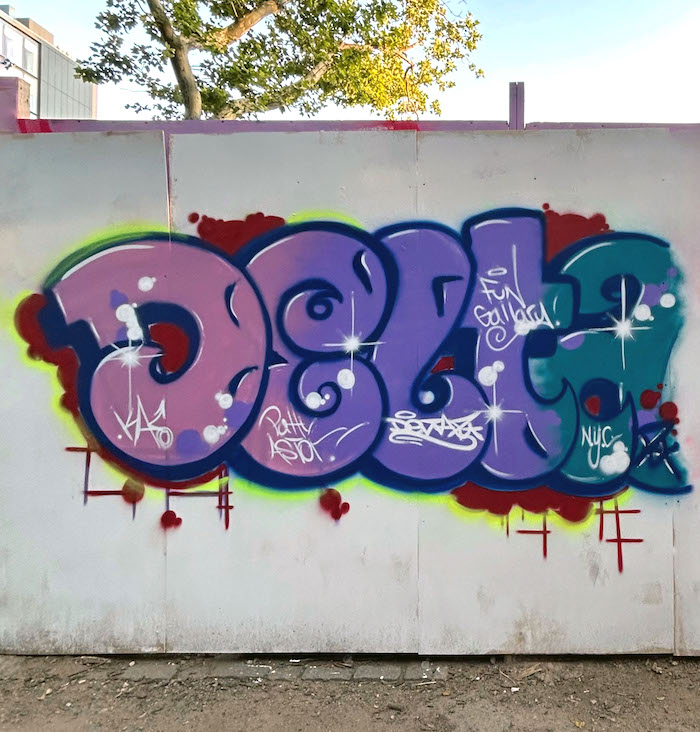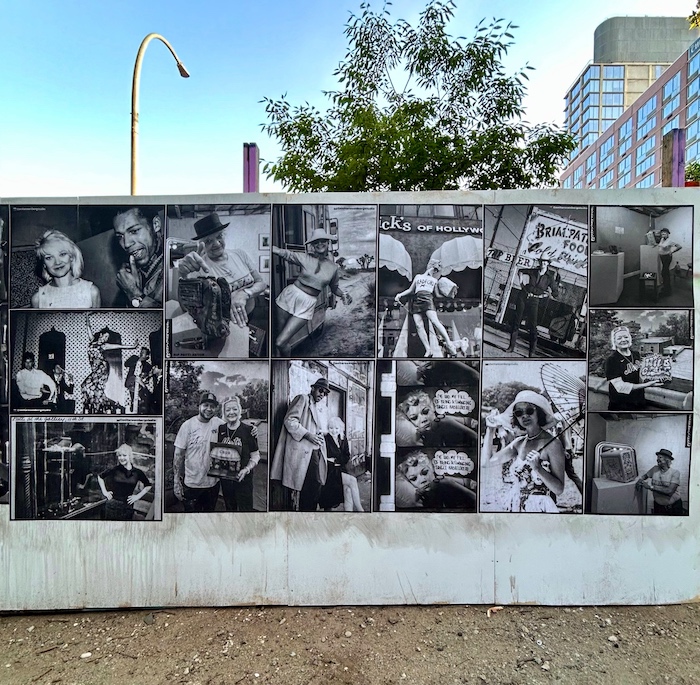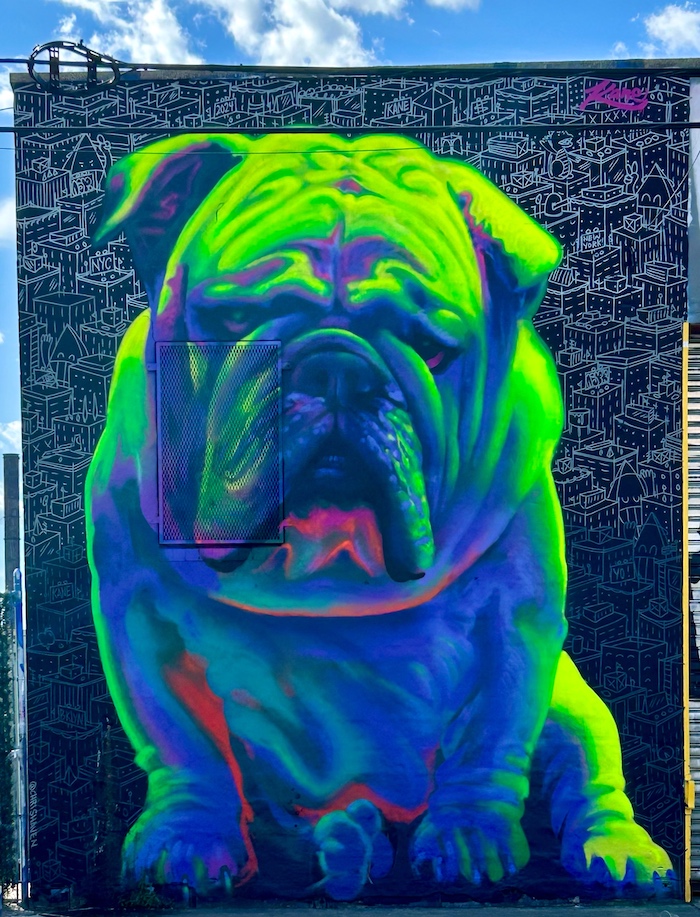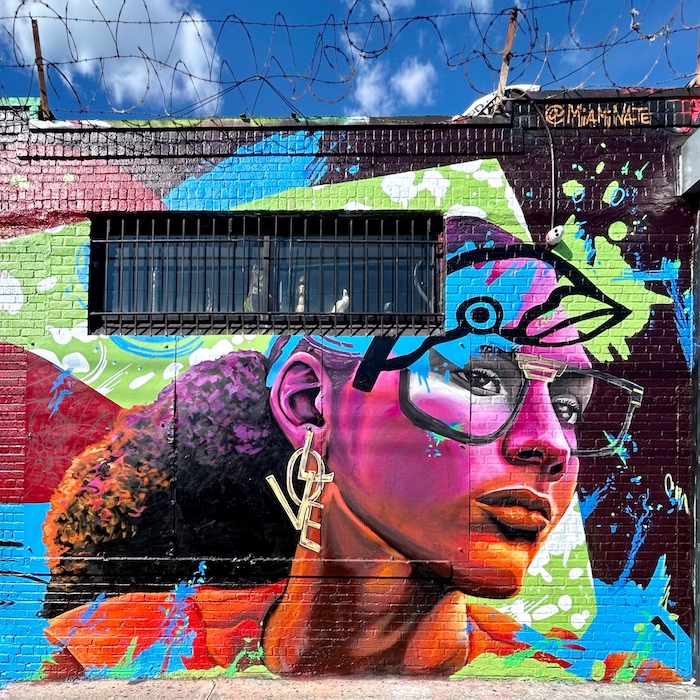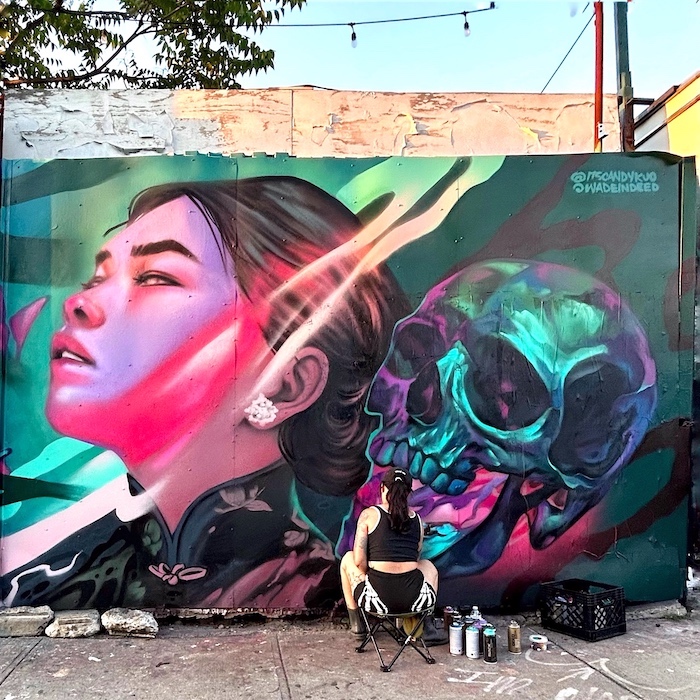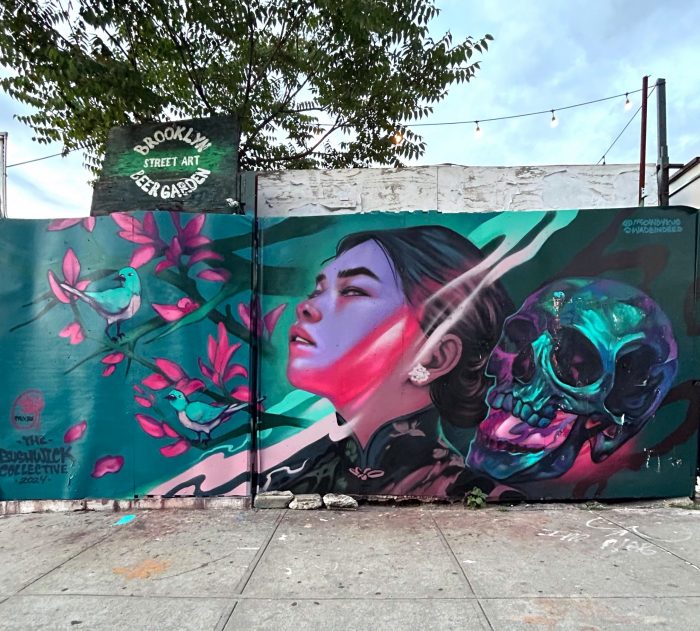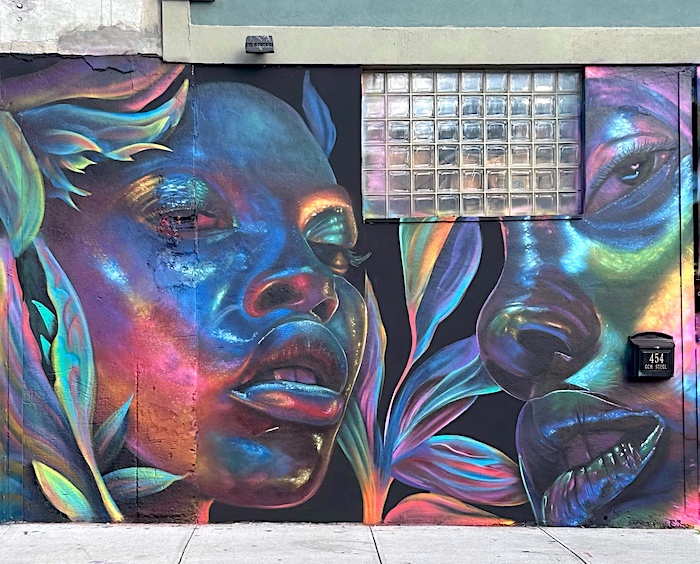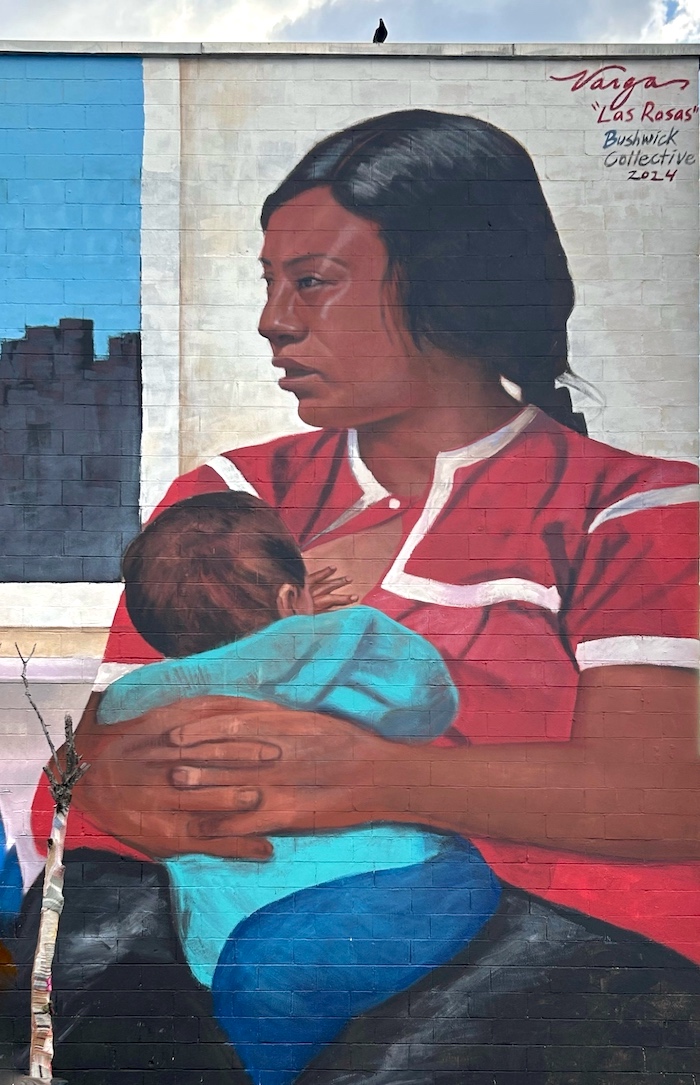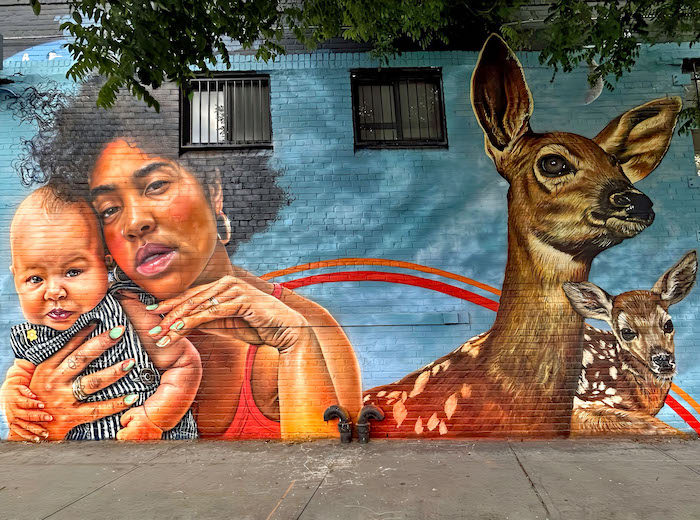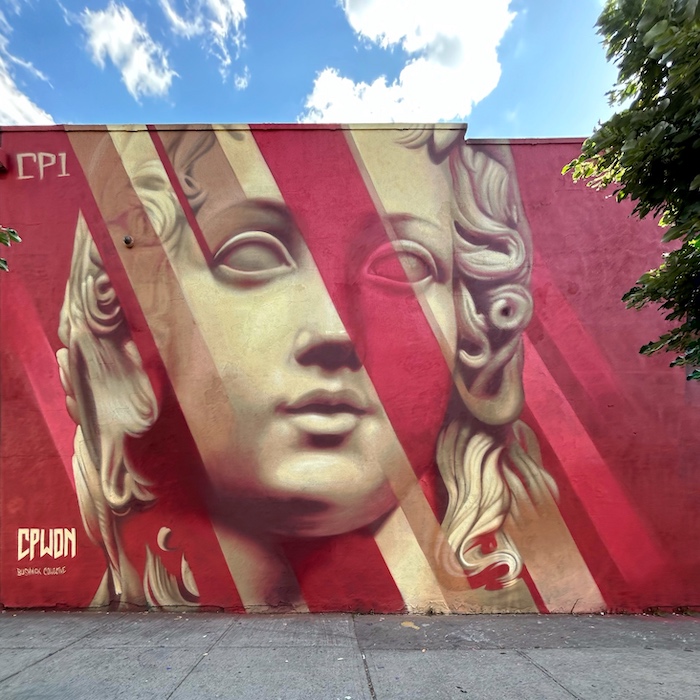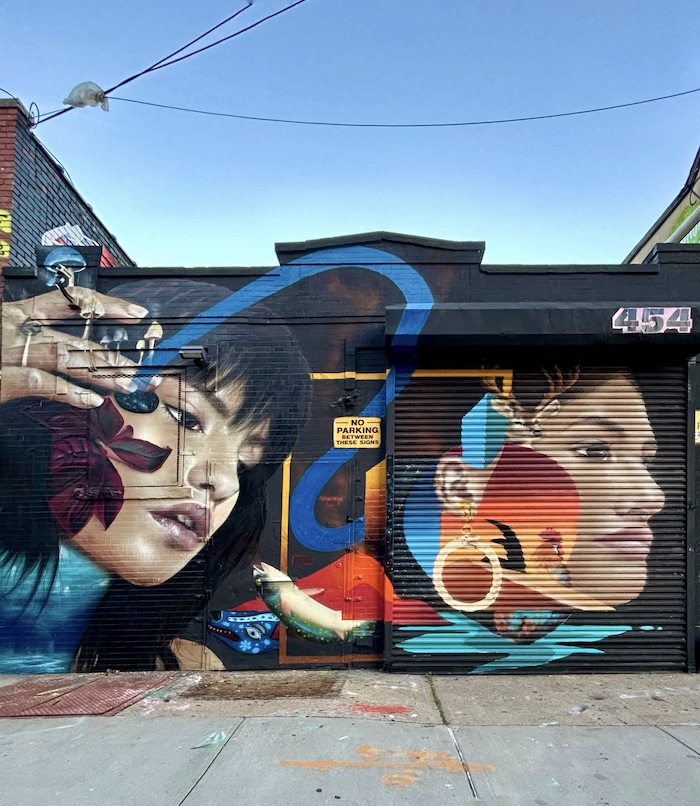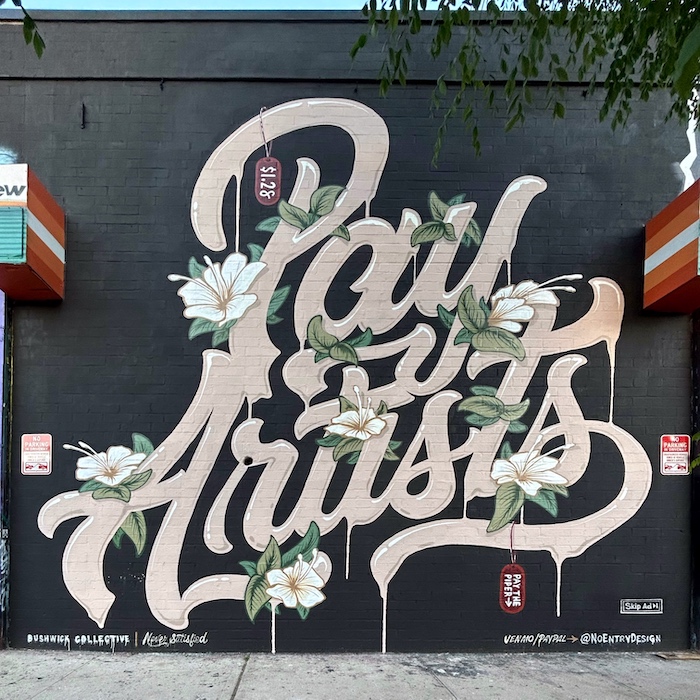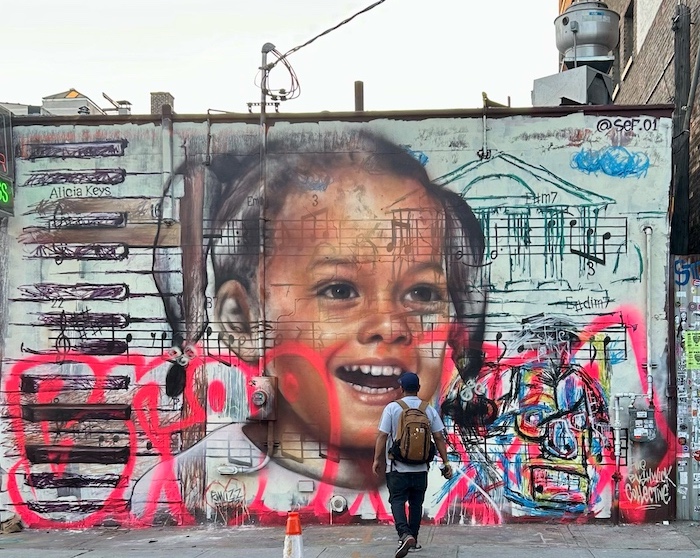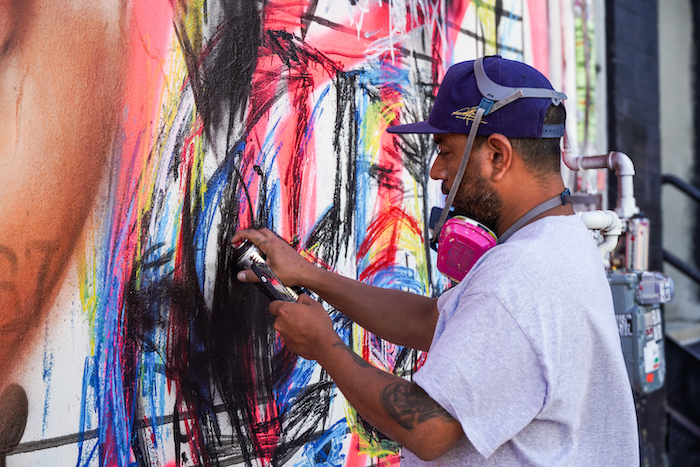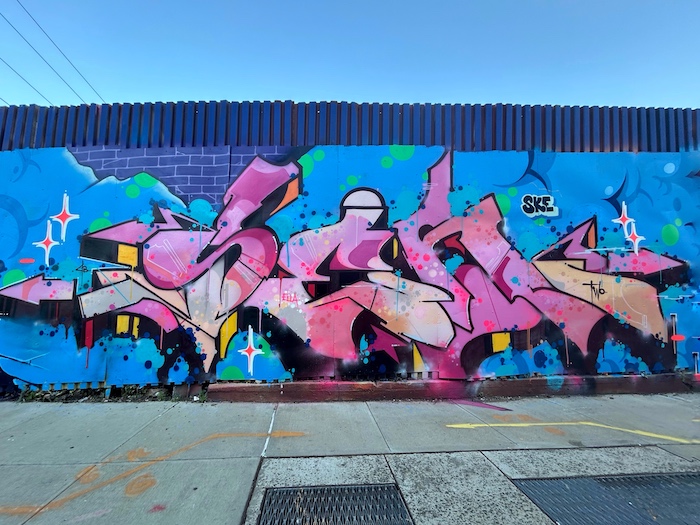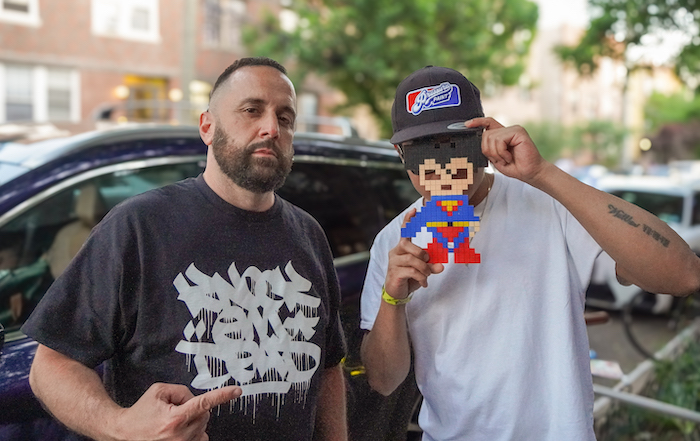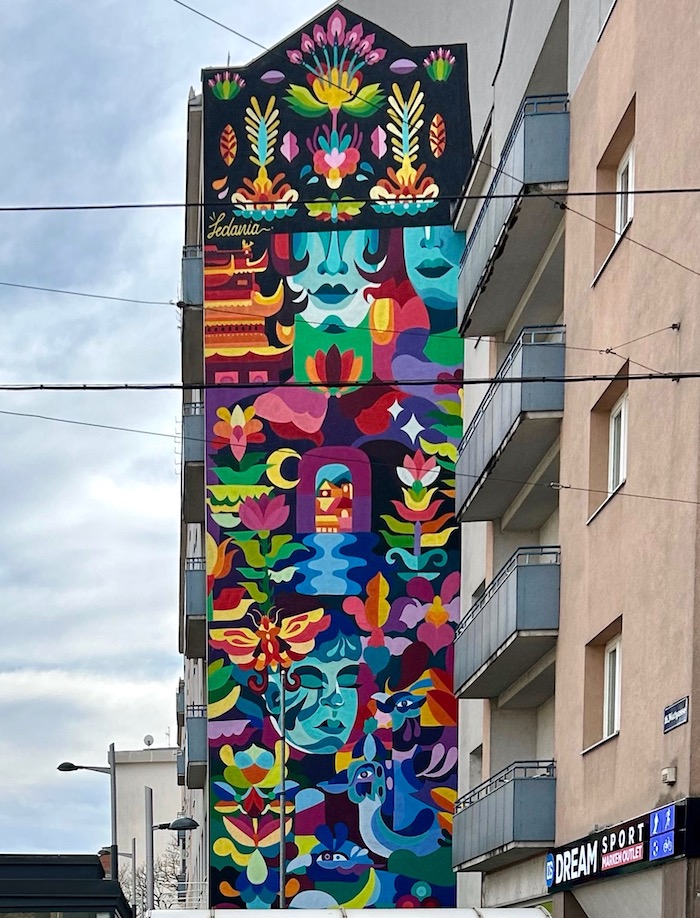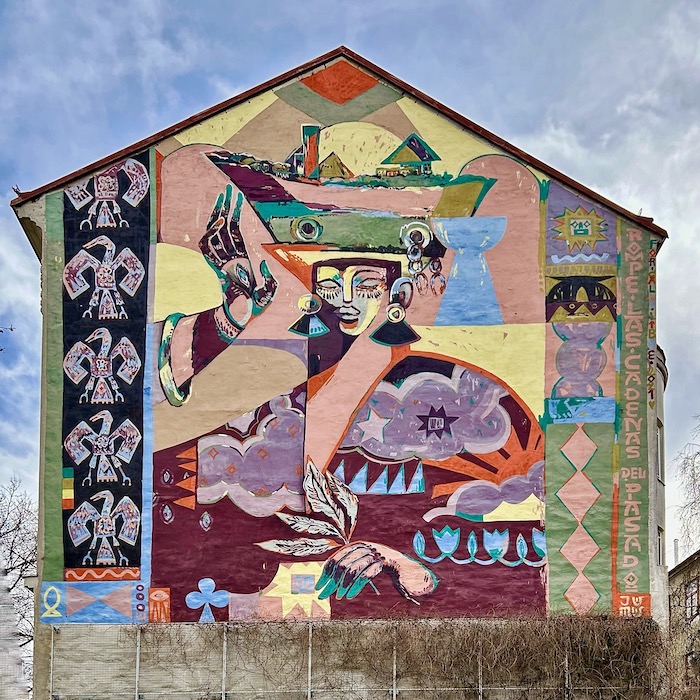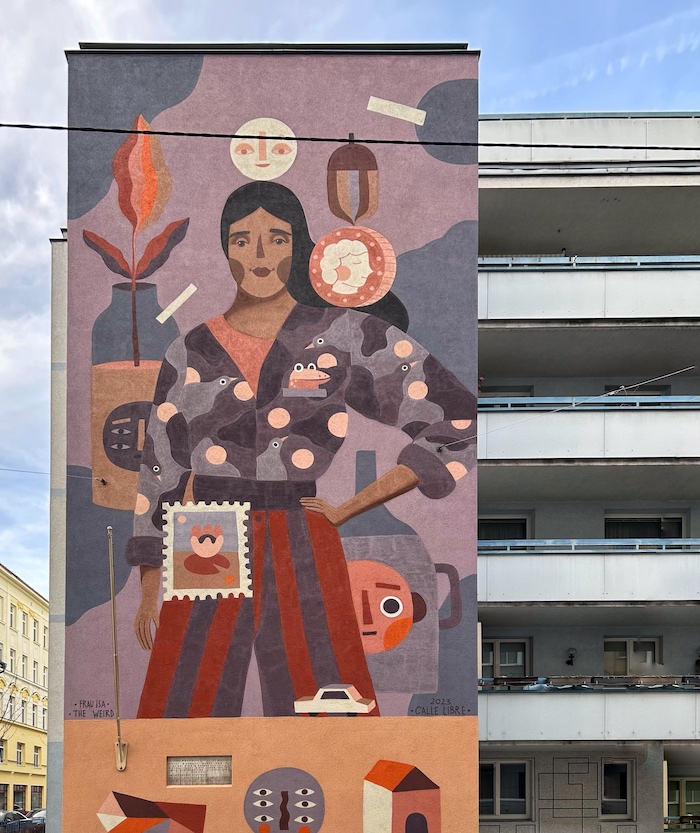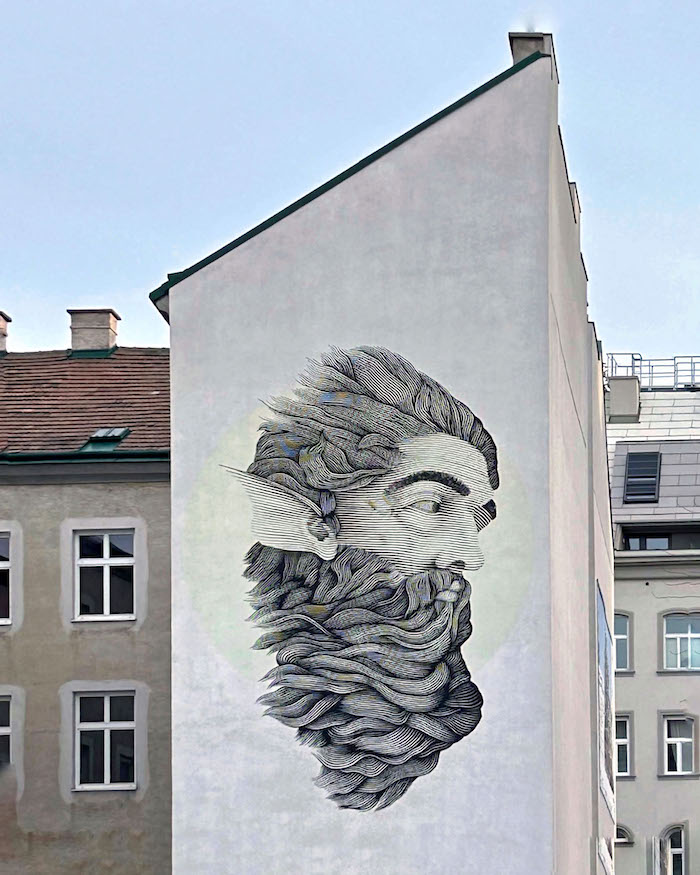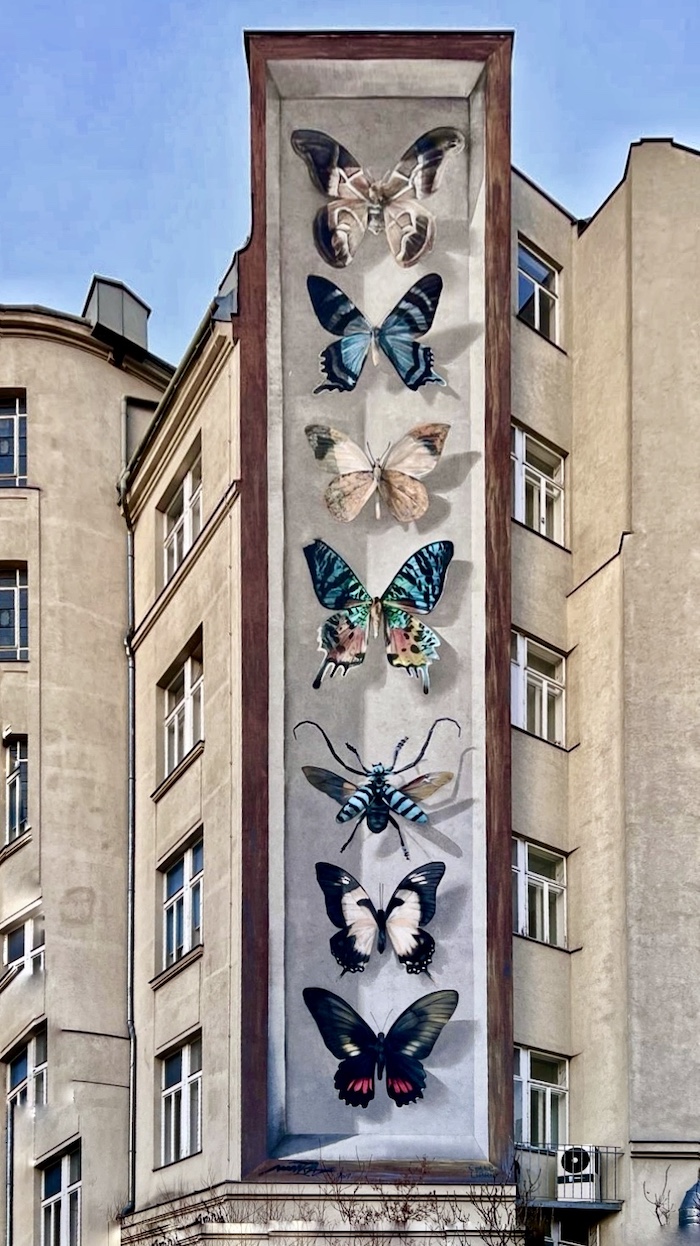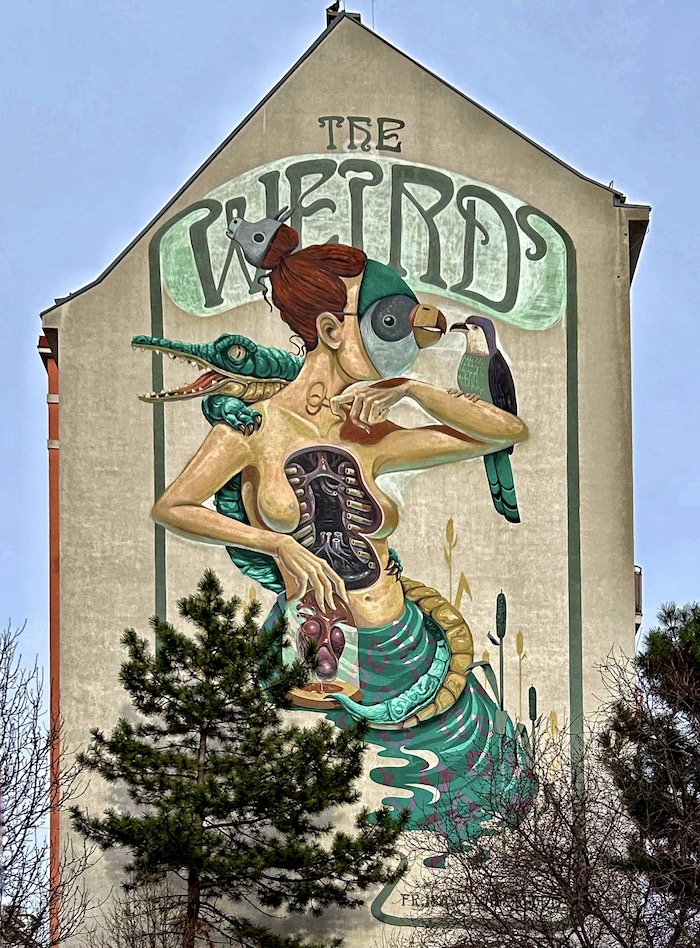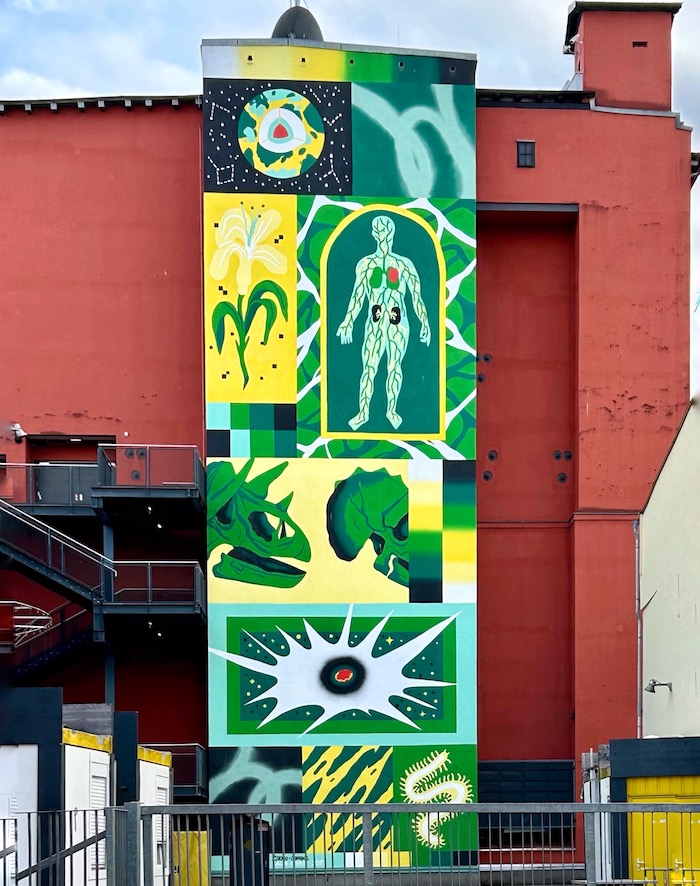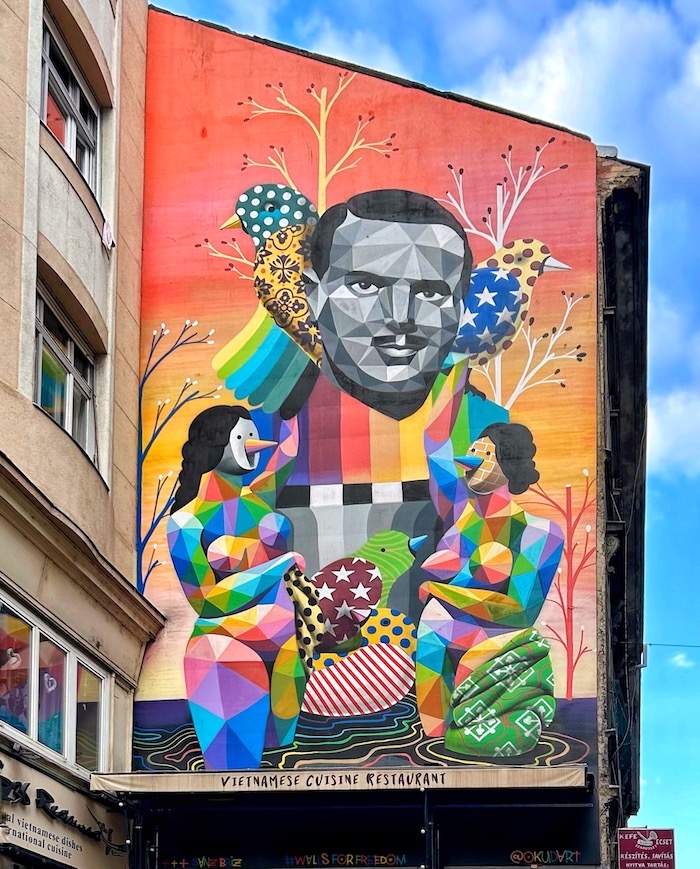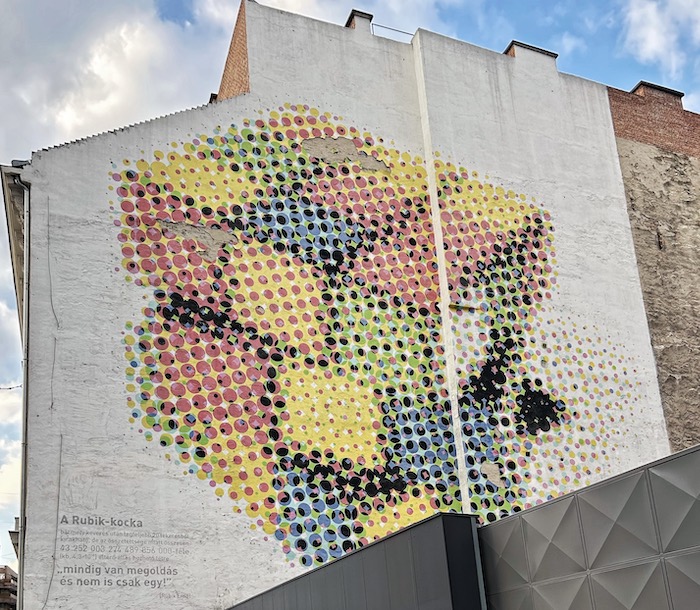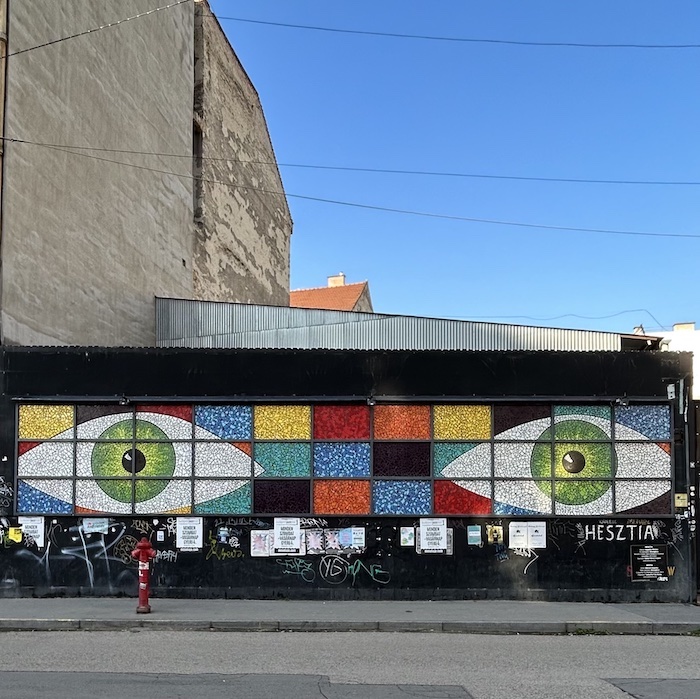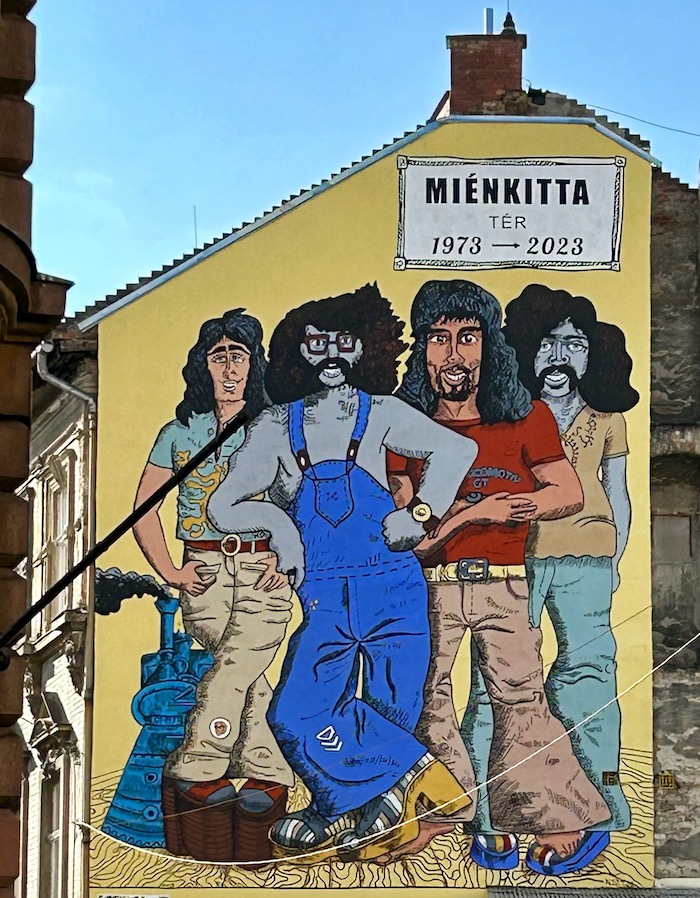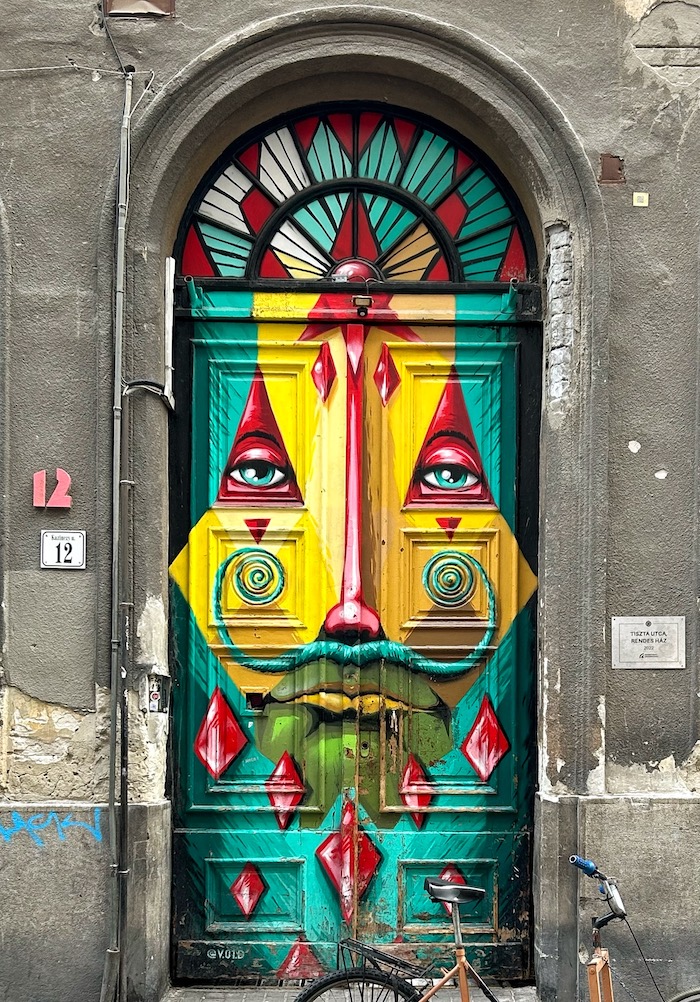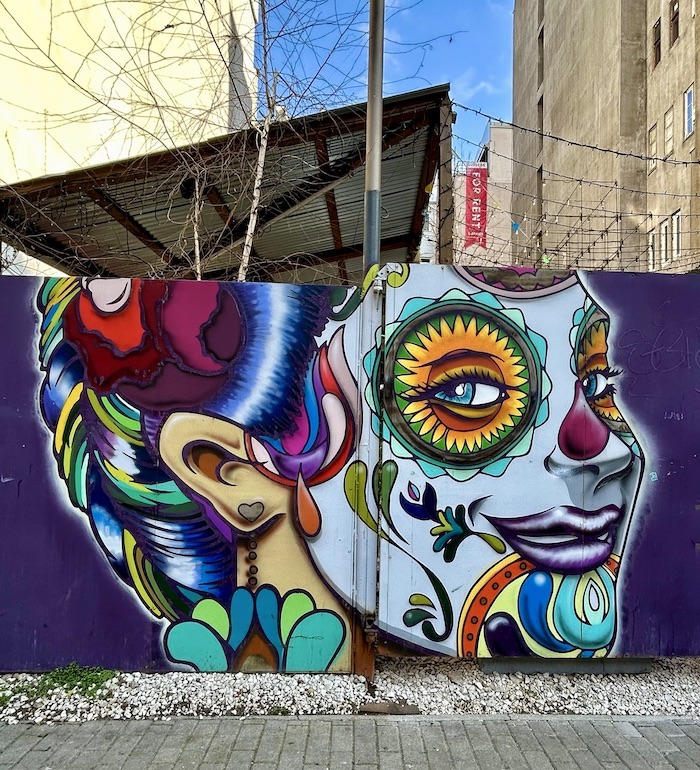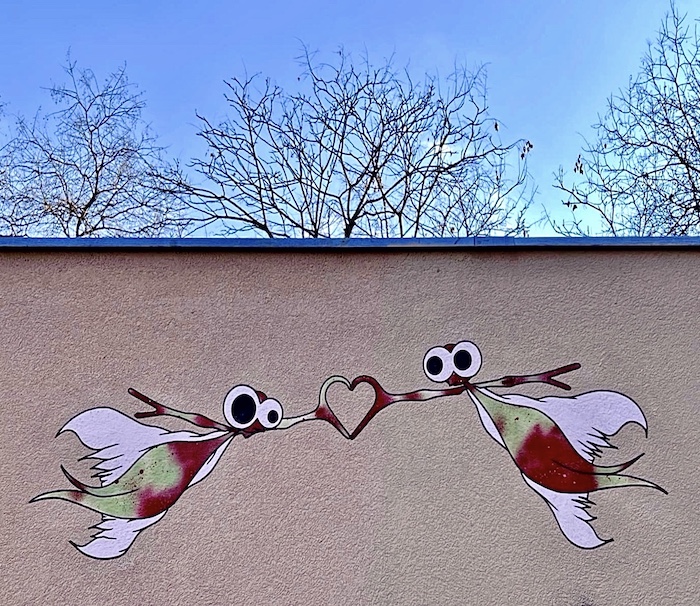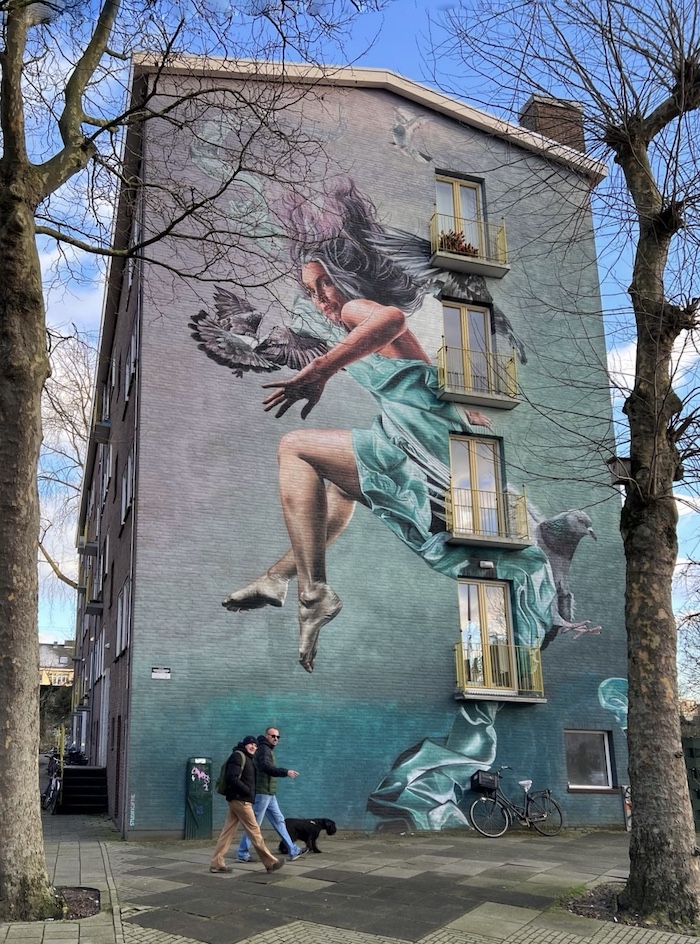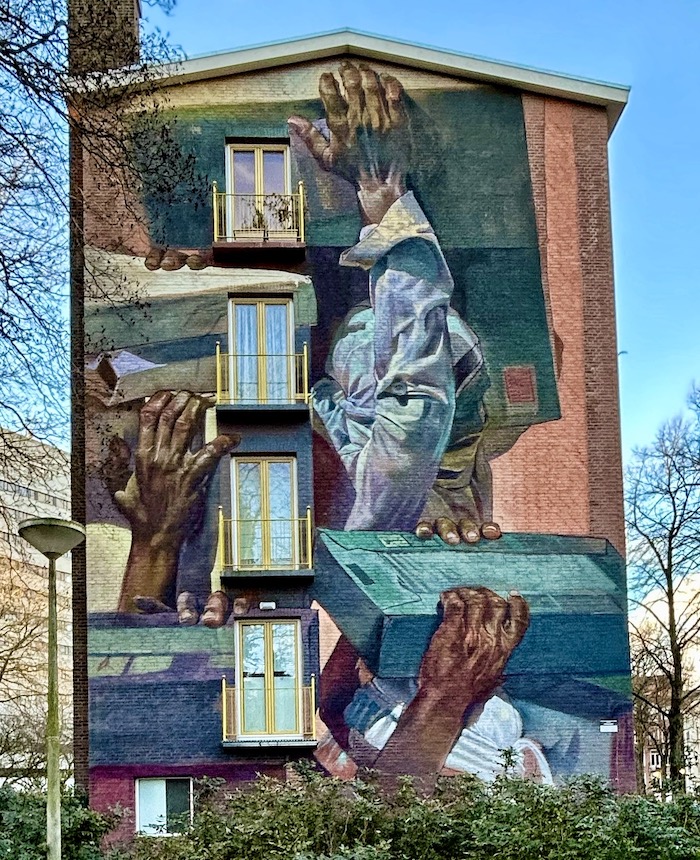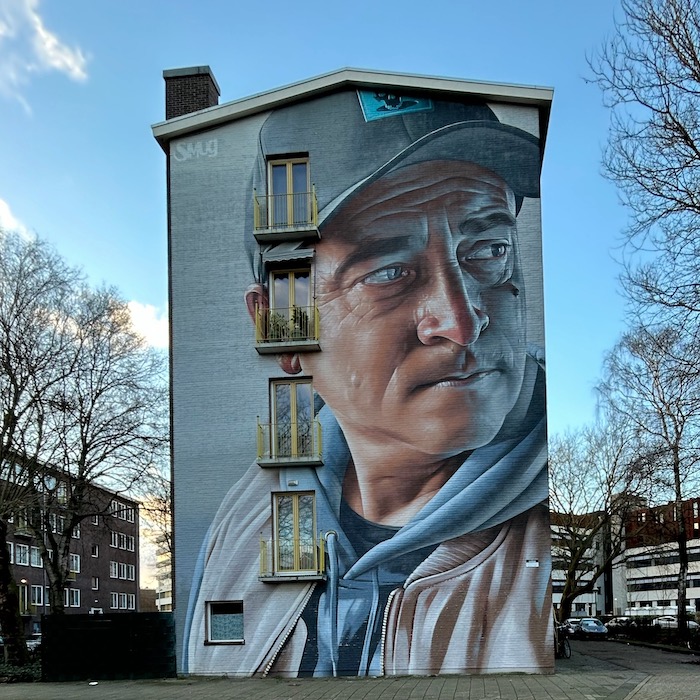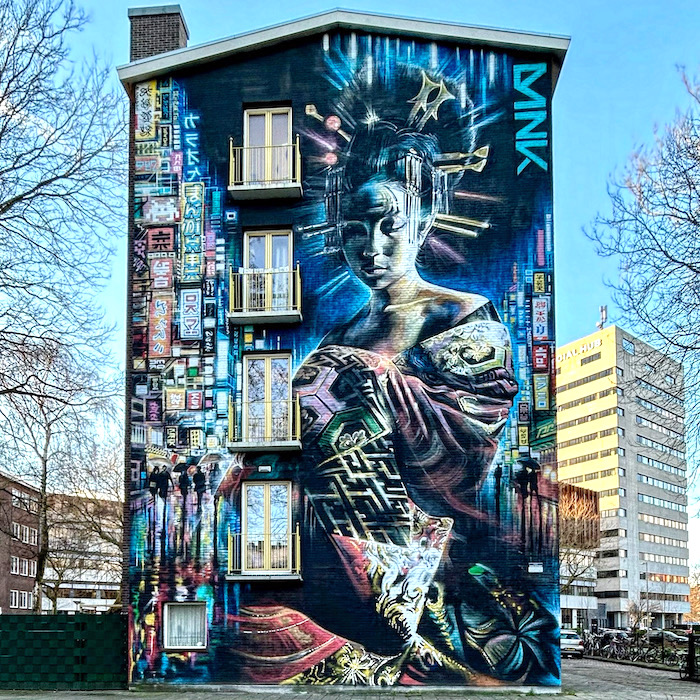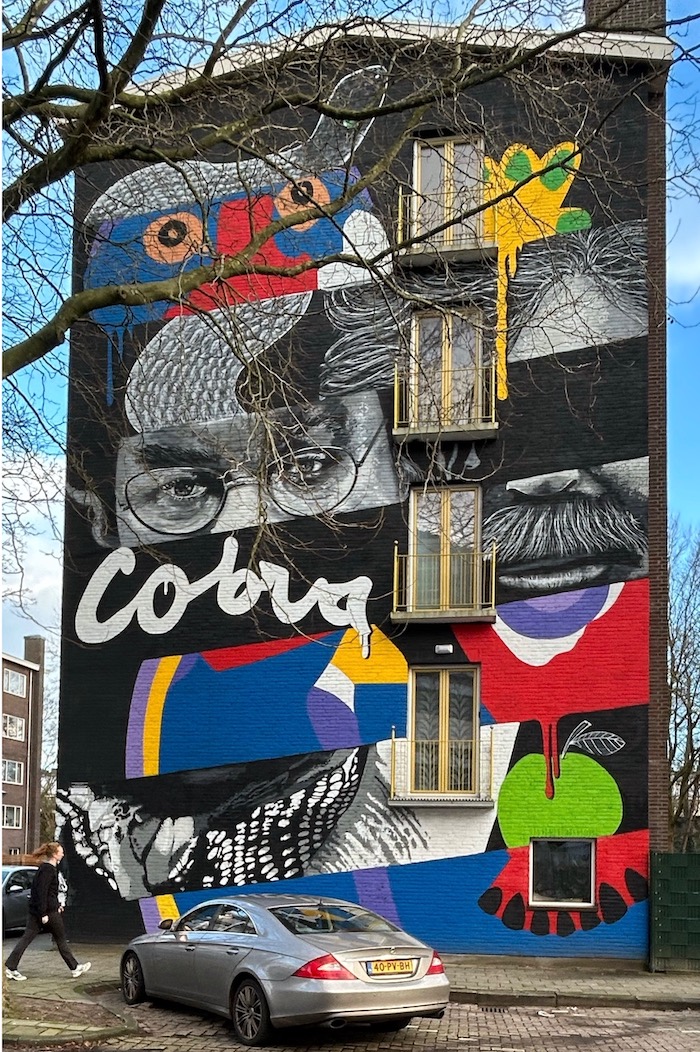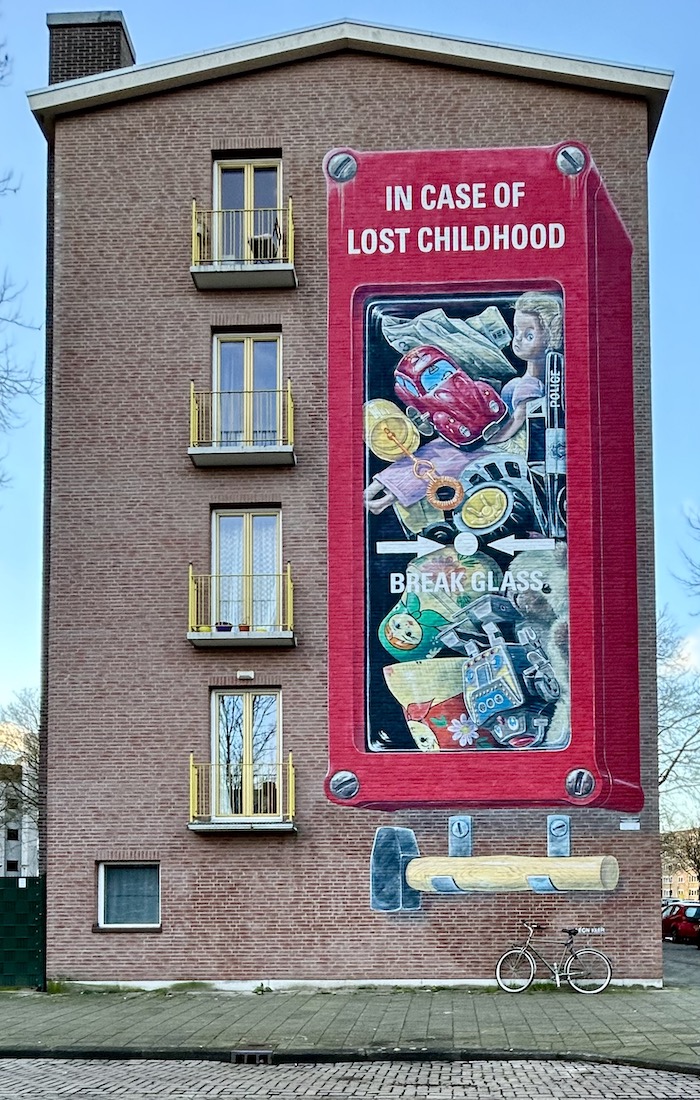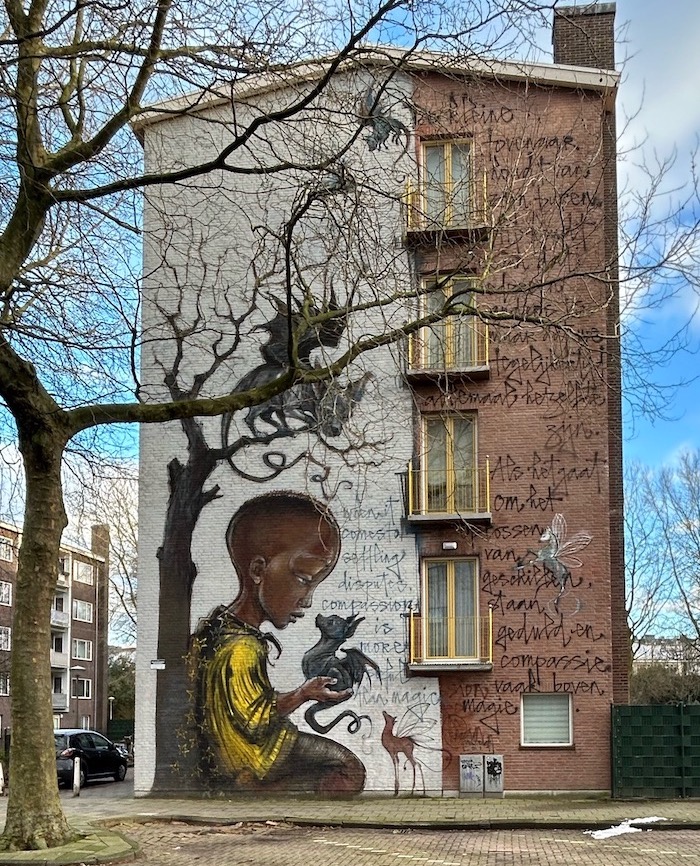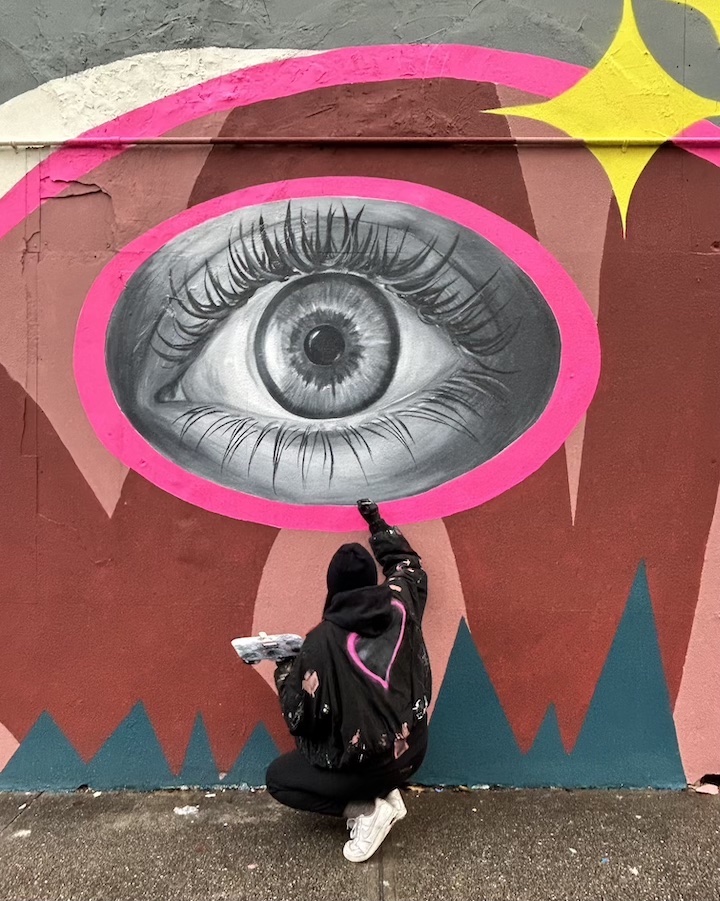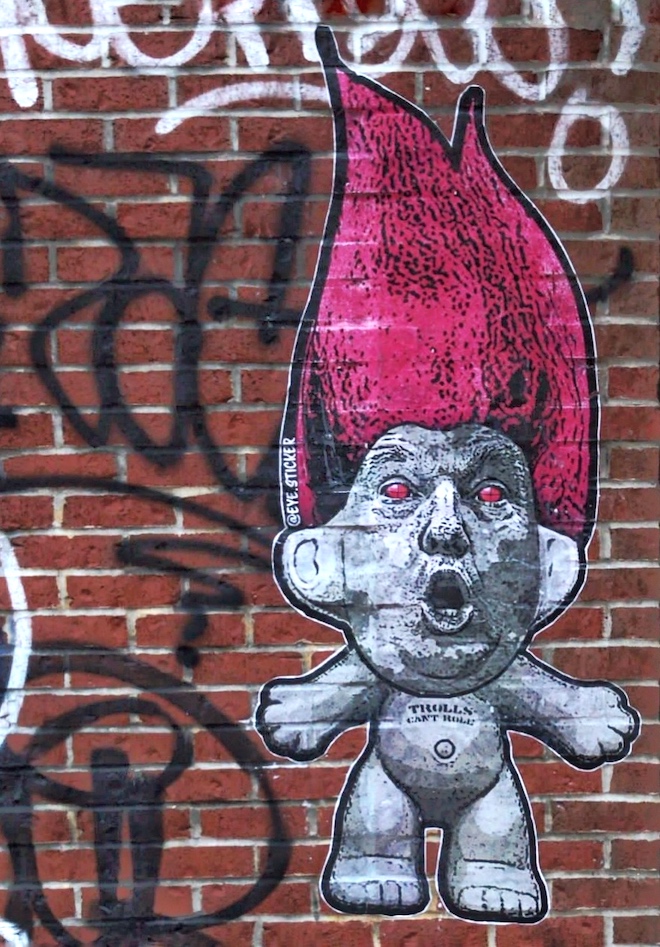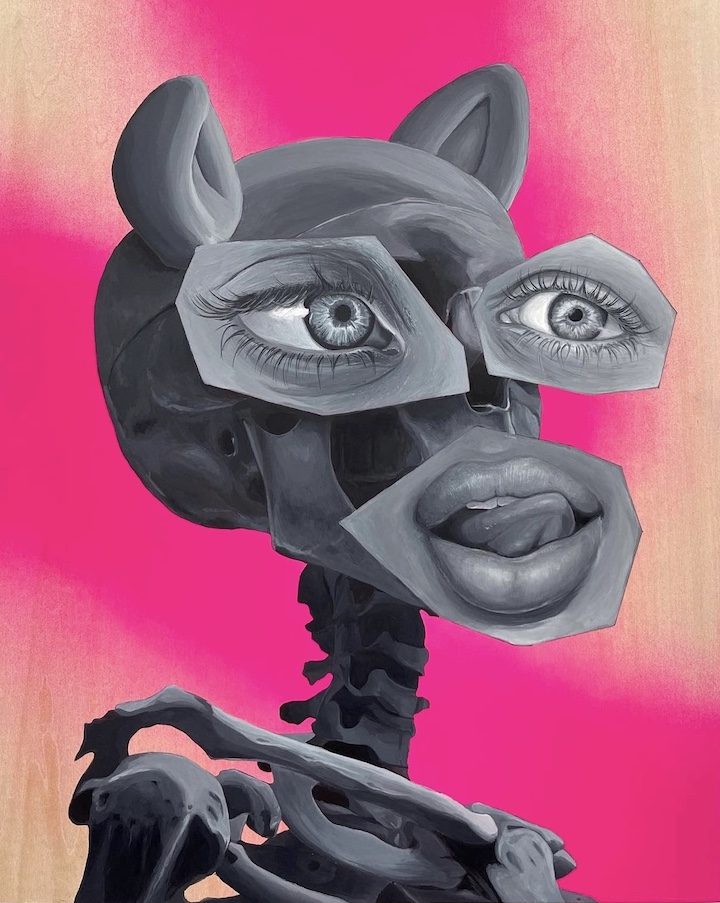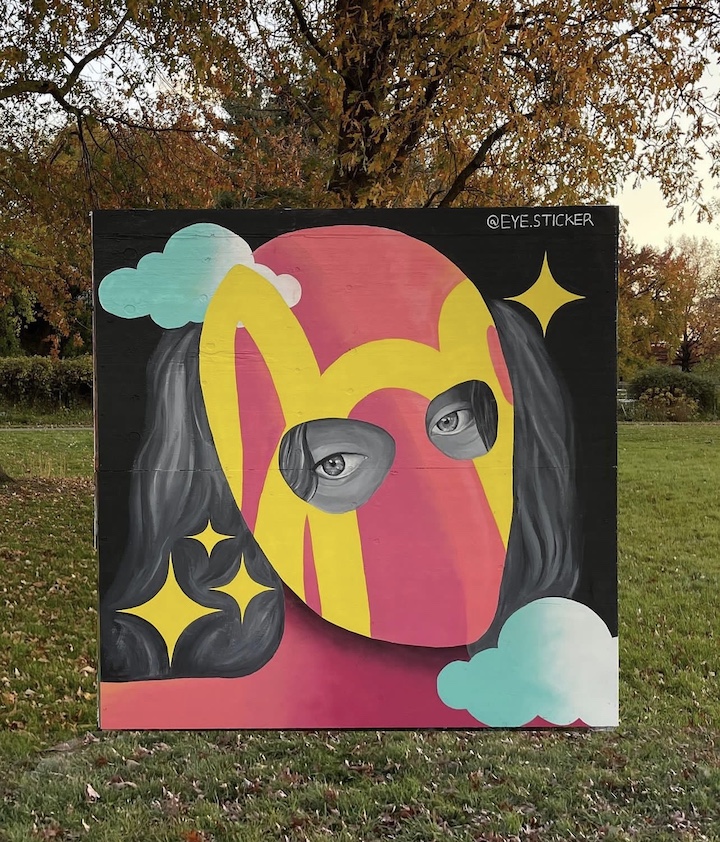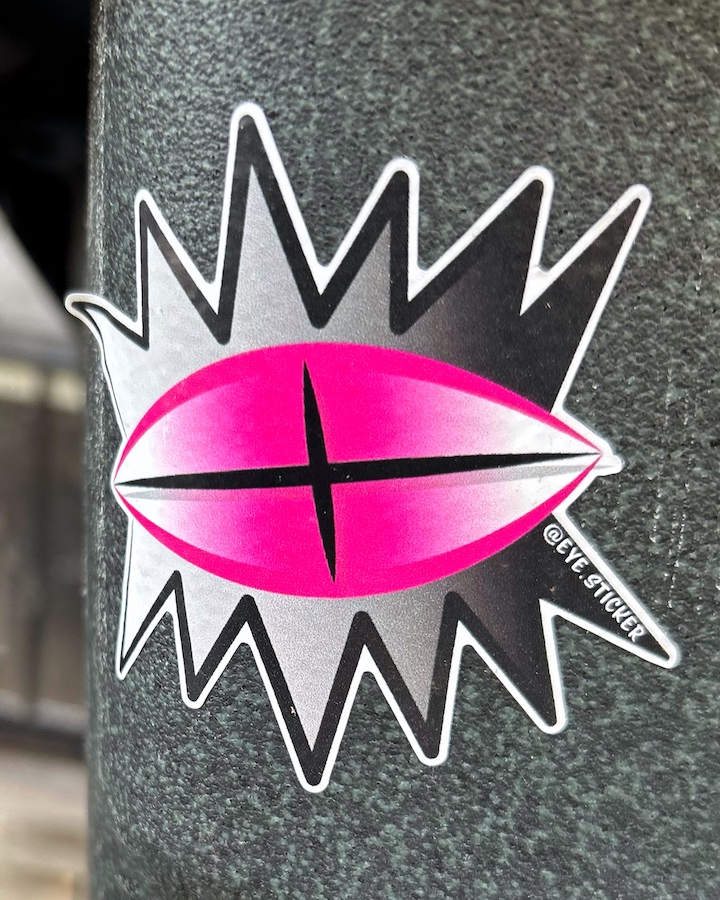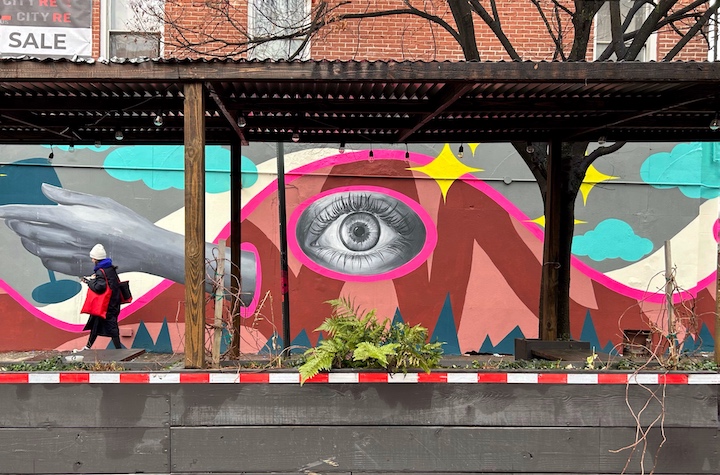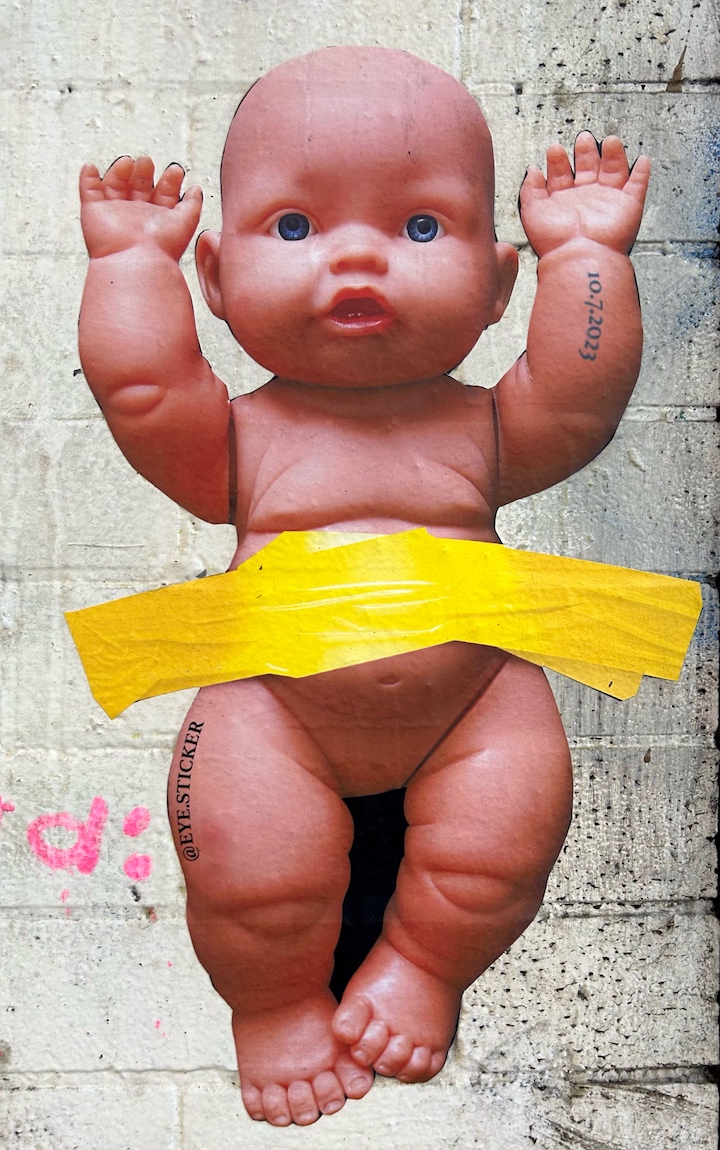The following guest post was submitted by street art enthusiast, arts writer and photographer Kristy Calabro
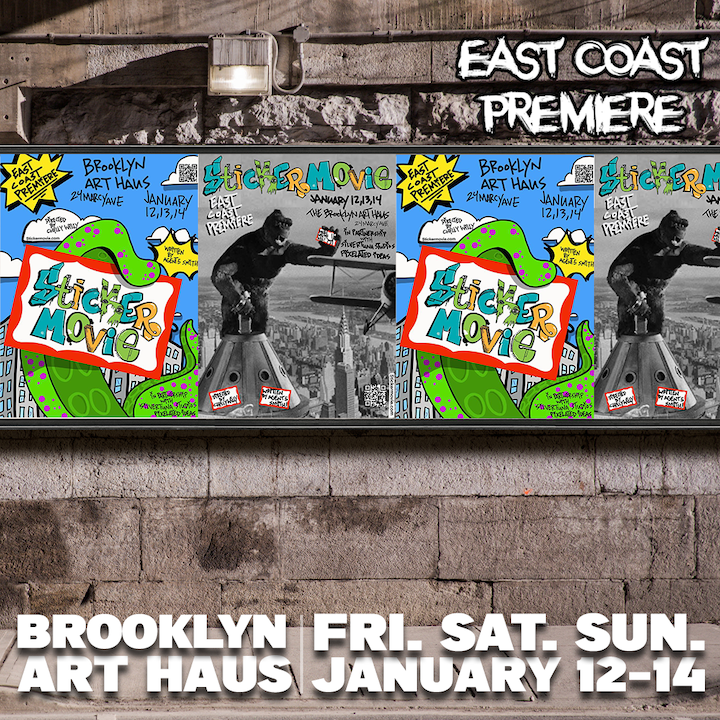
A delightfully versatile and accessible form of artistic expression, sticker art is documented and celebrated in the groundbreaking, AXS Film Fund-winner, “Sticker Movie.” Spanning 23 countries and over 80 artists, “Sticker Movie” offers an intimate glance into this beloved graffiti/street art subculture.
In anticipation of its East Coast premiere this weekend — January 12, 13, and 14 — at Brooklyn Art Haus, I had the opportunity to talk to its director, Will Deloney aka Chilly Willy’s Igloo and producer/writer Sha-Risse Smith aka Agent5Smith.
When did you first come up with the idea of making a documentary on sticker culture?
Will: The idea for “Sticker Movie” started during a serendipitous sticker trade with Sha-Risse Smith aka Agent5Smith. As we chatted, I discovered that she had written a feature film, “Strive,” starring Danny Glover. In pitching the idea of the documentary to her, instantly it became clear – we were the dream team for ““Sticker Movie.” Sha-Risse not only possessed exceptional writing skills, but also proved to be an outstanding producer with an extensive network in the sticker community. Agent and I embarked on a journey that felt truly magical.
Sha-Risse: The idea was swirling around in my head for some time. I knew the work it would take, and I could not do it alone. After trading stickers and vibing over Hendrix, Will messaged me about a collaboration, and I agreed. That was January 3rd, 2021.
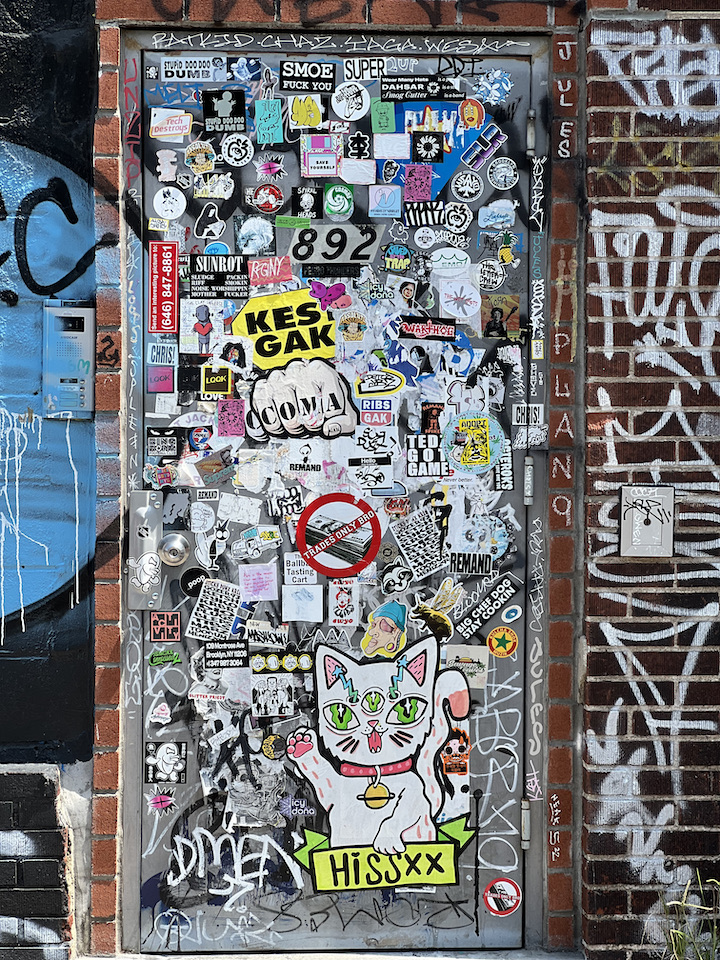
What do you think is the main appeal (‘appeel’) of stickers?
Sha-Risse: Stickers appeal to different people for different reasons, but the common factor is that they are low-risk. When getting up, stickers are quick and easy. People are less likely to get caught. But risks can also be financial. Stickers are relatively inexpensive. Someone may not be able to afford a canvas or print, but they can buy a sticker. Artists may not have money for spray paint or supplies, but they can grab a handful of label 228s for free. With stickers, there is less at stake.
Will: First, there’s the nostalgia factor – taking us back to the simpler joys of childhood, getting a gold star sticker for an achievement. I’ve never thought about this until now, but gold stars in video games awarded must have come from that same achievement concept. Also, the compact nature of stickers means artists can transform any surface — bringing creativity to unexpected places. Their accessibility and ease make them the democratic go-to’s of street artists. Collecting and trading stickers fosters a sense of connection and don’t forget their DIY spirit – stickers are the punk rock of the art world: rebellious, personal, and extremely contagious.
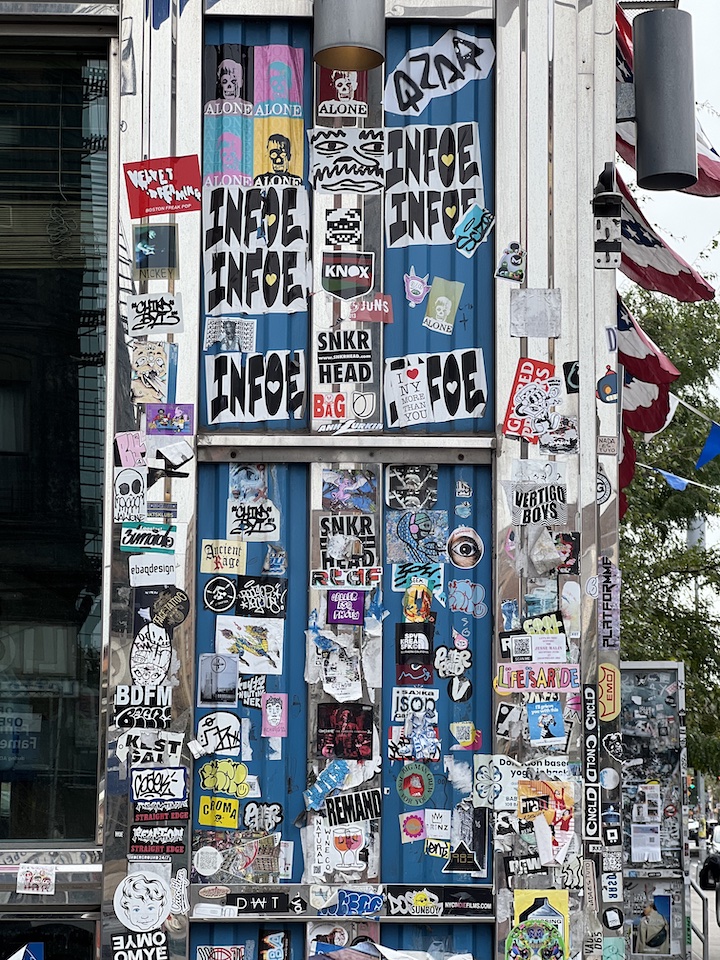
Stickers are an escape; they’re therapy, and a way to mark a spot to say, “I was here.” What do you see as the primary advantage of stickers?
Sha-Risse: Stickers are a form of art therapy. When getting up, I exercise, breathe fresh air, and interact with my environment. I often walk for hours around the city putting up stickers and photographing street art. It’s cathartic. The best use of stickers is to simply enjoy them.
Abe Lincoln Jr once said, “Stickers are little bite-sized civil disobedience.” Are stickers the answer to all the capitalist propaganda out there?
Sha-Risse: All street art is the answer to capitalist propaganda. However, stickers are unique. You can put one image in many places fairly quickly. But you can also fit several in one space. Their small size is an advantage. You can send them around the world and get up in places you have never been. Stickers are unmatched when it comes to coverage.
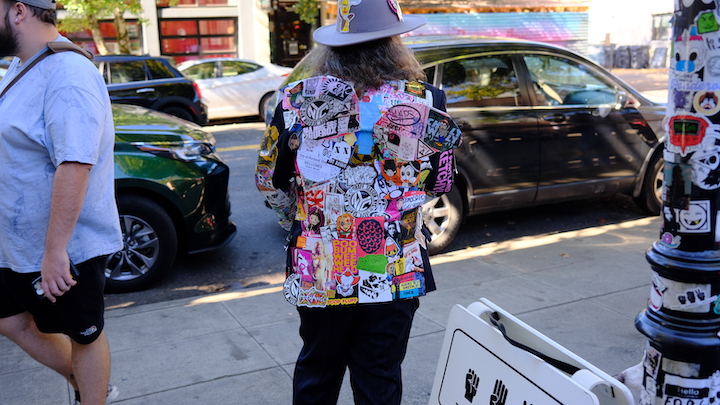
How was it like to experience the “Sticker Movie” premiere in Portland? And why did you choose to show it there first?
Will: From day one, we wanted “Sticker Movie” to be a cinematic experience, and Cinemagic, the magical independent theater in Portland where we screened, was flawless. The city’s vibrant and supportive community of artists, coupled with its thriving street art scene, made it an obvious choice. Portland embraces creativity, and we knew that our film would feel right at home among the eclectic and open-minded residents. Witnessing the genuine enthusiasm was the ultimate reward for the time and energy invested in the documentary. Portland not only hosted our premiere, but it became an integral part of the story we were telling.
Sha-Risse: Overall, my experience in Portland was incredible. There were tears of overwhelming joy and relief. We pulled off three screenings and four events in one weekend. We worked hard. I am grateful to the community of sticker heads and normies who came out to support us. I am thankful for the old and new friends who welcomed me. There was so much love in Portland; I will never forget that experience.
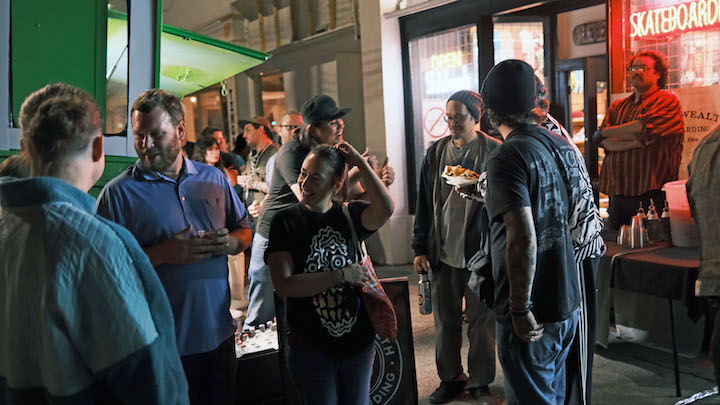
I loved when Slappy says, “When you have stickers, you’re never alone.” Have you any thoughts regarding how stickers bring people together?
Sha-Risse: I encourage others to discover the community organically on their own. Attend a show, make sticker trades, and find individuals you connect with. Do what works for you. Like the art we create, each person’s experience is uniquely theirs. I am not countering Slappy’s line. I wrote it because I believe it. But it is important to know that not everyone’s participation looks the same. That is the beautiful thing about our community. The sticker scene is diverse, and there is something for everyone.
Will: The communal nature of sticker culture is like an unspoken invitation to join a vibrant and inclusive creative tribe. Artists, collectors, photographers, and enthusiasts, drawn together by their love for this pocket-sized art form, share a unique bond that transcends geographical boundaries. The act of trading and sharing stickers becomes a language of its own, connecting individuals who might never have crossed paths otherwise. It’s a beautiful collision of creativity and camaraderie, proving that in the world of stickers, the adhesive that binds us is as strong as the art itself.
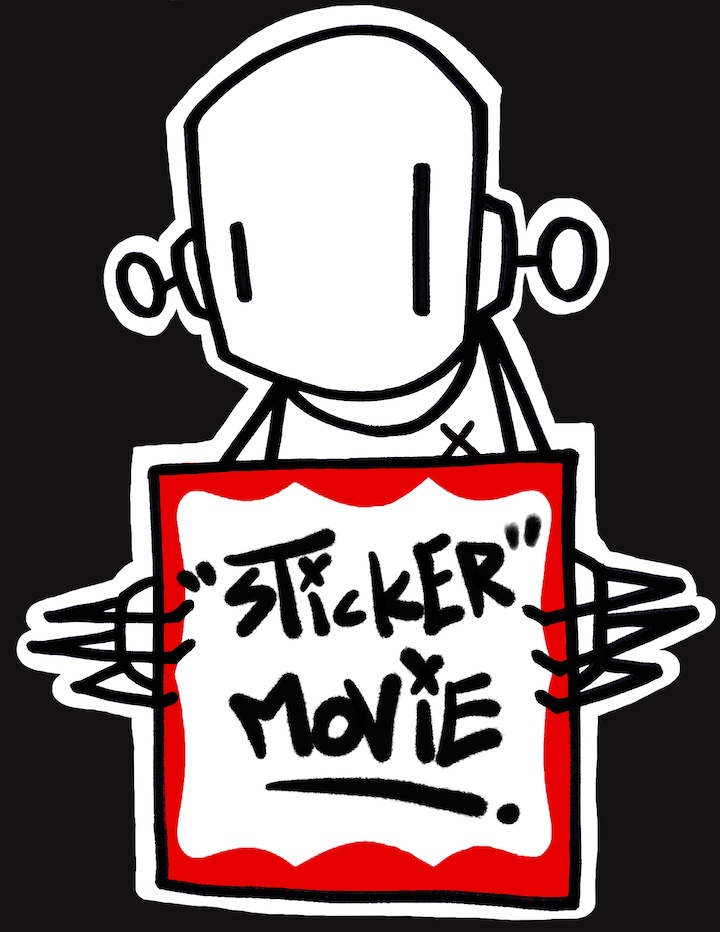
Do you want to give shoutouts to anyone who helped make this movie possible?
Sha-Risse: Shoutout to Niceo CM. He supported me throughout this journey, and I want to thank him publicly. Making “Sticker Movie” was challenging, and I vented to Niceo weekly and sometimes daily over the last three years. He listened while motivating me to toughen up and keep going. Also, shout out to Chris Robots Will Kill. He was the first artist to say, Yes, to being in the movie. Without his recommendations and help, we would not have this New York premiere.
Will: I really want to give my shoutout to Agent5Smith. Without her, none of this is possible. She has worked tirelessly with the mantra of “whatever is best for the film.” She has put over three years of her life into this film, and her love and passion for stickers is why we are here. Thank you, Agent. I love you. Also, shoutout to Dazey Phase, our Executive Producers on this journey.
Will there be a Sticker Movie 2?
Sha-Risse: There are some exciting things in the works. Stay tuned!
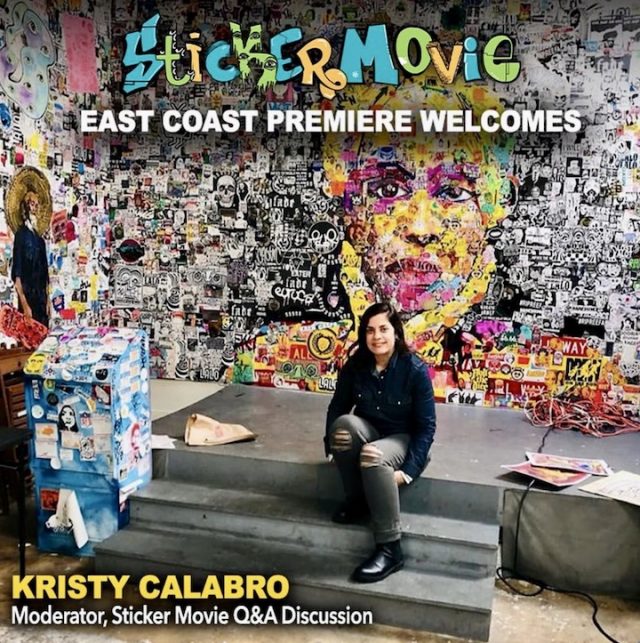
Produced by Emmy-winning creative studio Pixelated Ideas, it all started with a sicker trade…three years in the making of bringing small stickers to the big screen. When artists see their stickers displayed in diverse communities and in urban spaces, they feel a sense of pride. Connections are fostered locally and globally. Messages and ideas are shared, as mundane objects — like doors, lampposts, and mailboxes — are transformed into mini art galleries. An effective medium for self-expression, stickers, ultimately, unite us, as they bring like-minded people together.
Note: Friday night and Saturday’s screenings are sold out. Tickets can be purchased here for Sunday, January 14, 3 pm matinee, to be followed by a live podcast with City Kitty.
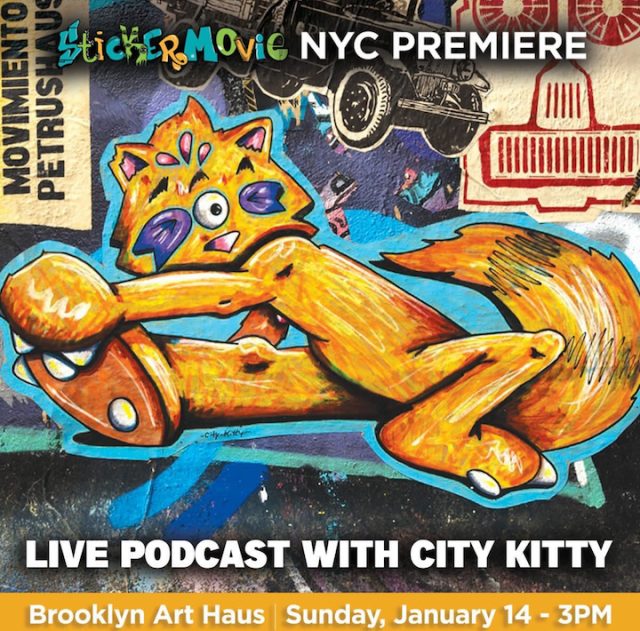
And running concurrently with the movie’s East Coast showing will be an art exhibit at Brooklyn Art Haus curated by SilverTunaStudios.
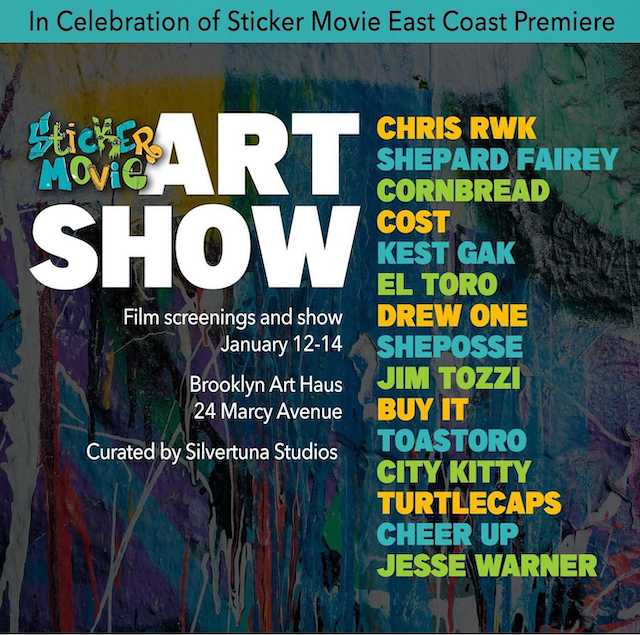
Note: This guest post was submitted by Kristy Calabro and edited for brevity by Lois Stavsky; all photos courtesy Kristy and Sticker Movie.
